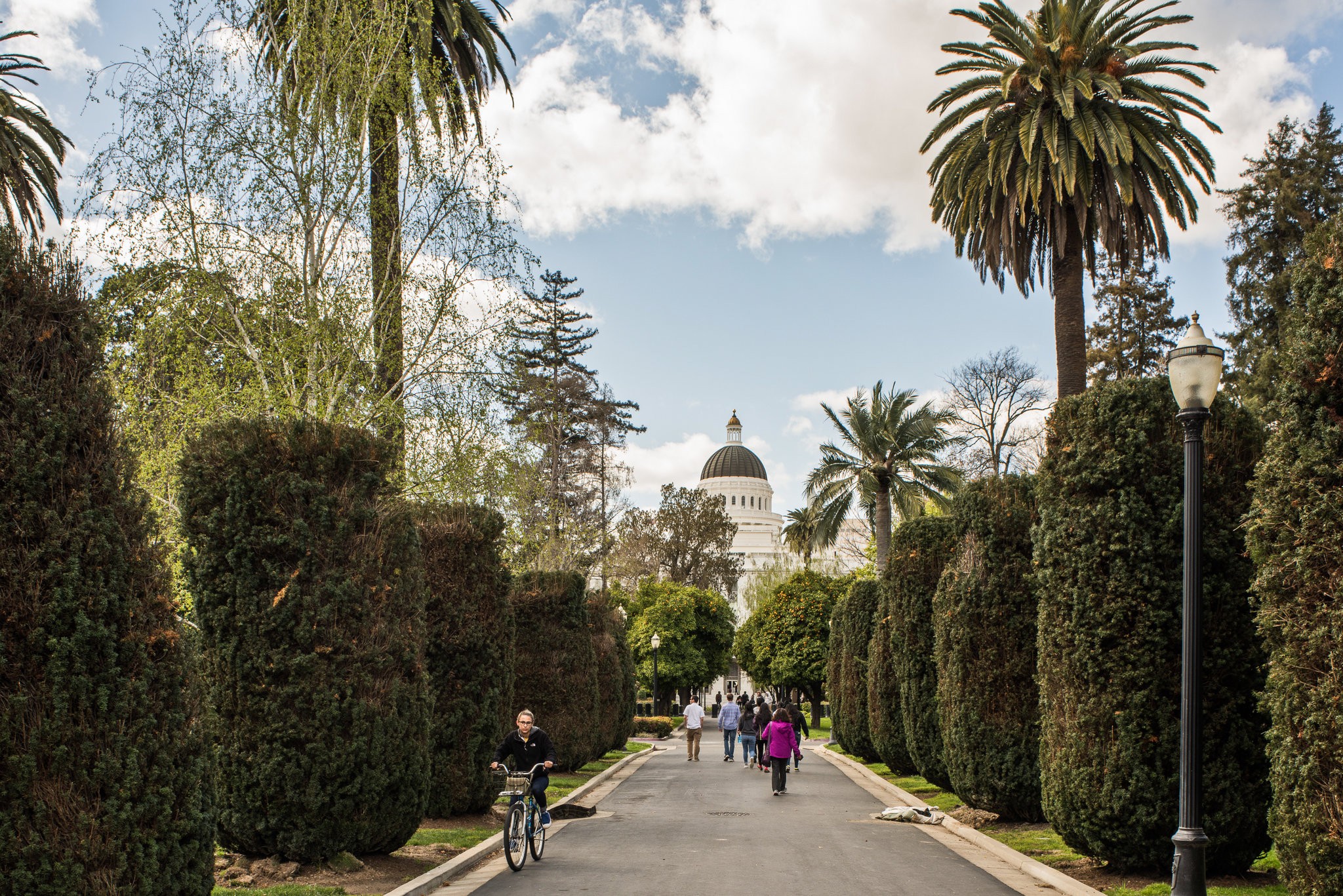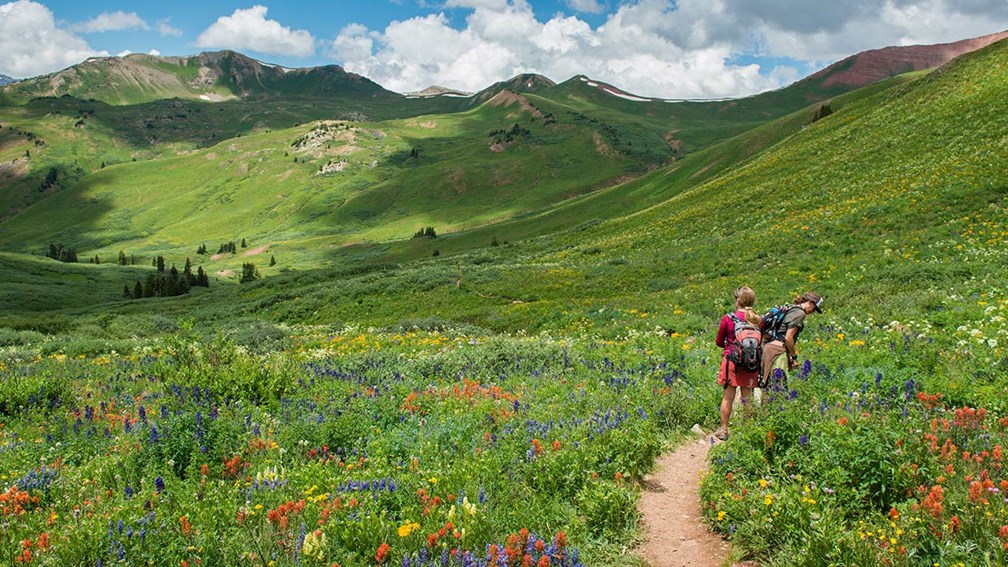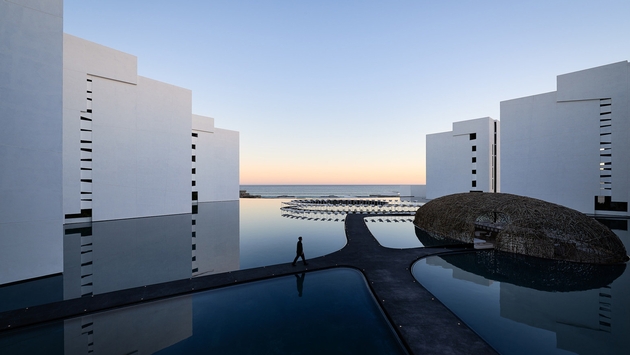The ultimate guide to Hakuba’s top Japanese ski resorts

In a rapidly evolving Japanese ski town with 10 resorts to choose from it can be hard to know where to start when it comes to selecting the right mountain for you. While there is information readily available it can be time-consuming trying to get an unbiased idea of Hakuba’s mountains and what type of visitors they can offer the most for. In no particular order, here are our picks for Hakuba’s top 7 resorts, blogged by Nadine Robb, Owner and Instructor at Hakuba Ski Concierge.
1. Hakuba47
A solid all-rounder, Hakuba47 has good terrain for every ability level. Its north-facing slopes give it the longest season in the valley for top to bottom skiing, making it a particularly good choice for those visiting early or later in the season. Its beginner area is conveniently located halfway up the mountain so even first-time skiers can enjoy the view over the Hakuba townsite and ski themselves down a gentle cat track to the bottom. Its other strength is its underrated Tree Riding Zone. Popular with seasoned local riders given to its close proximity to the village, steep and technically interesting terrain, light, dry powder and is typically much less busy than other tree-riding areas within the valley.
2. Goryu & Iimori

Connected to Hakuba47 at the top, Goryu has many draws of its own. The gentle slopes at the base make it well suited for beginners, and the free snow play and sledding areas make it ideal for those with small kids. Higher up skiers can choose from shallow greens to steep moguls, while it’s base building Escal Plaza is a true ‘one-stop-shop’ with good food selection, all necessary facilities, and a great quirky indoor play area for kids of almost any age. Iimori – a separate area that connects via chairlift – is a beginner’s dream with quiet, wide-open slopes and a gentle progression as skills develop. Again, all facilities are close at hand including making it extremely easy to feel right at home.
3. Sanosaka

Arguably Hakuba’s most underrated resort, this has not yet fallen victim to the same human traffic that other mountains have succumbed to during the busy periods. Its peaceful slopes combined with its position over Lake Aokiko makes it unlike anywhere else in the valley. Its slopes vary from wide open novice slopes, through to intermediate and also moguls. The base area has had a chic new renovation and provides a range of eating options, making this the perfect choice for those seeking to get off the beaten track and experience something a little less commercial. The views themselves are truly impressive and given to a recent surge in fresh innovation – Sanosaka is evolving in new and exciting directions.
4. Happo One

The most well known within Hakuba by both the Japanese and Westerners, Happo is indeed the largest in the valley in terms of slopes available. Home of the 1998 Olympic Downhill, Super G & Combined Slalom events, most of its slopes are best suited to intermediate to advanced skiers as it has no shortage of red runs, black runs, and moguls. That being said, Sakka is a good beginner area located at the base of the mountain with all necessary facilities close at hand, as well as snow play and sledding areas. From the top of the Grat Quad (at the very top) Mount Fuji can be glimpsed on clear days, while `Pilar` is a fabulous fine-dining French restaurant at the top of the Alpen Quad. The food quality and views from Pilar make it a stand out in the valley for on-hill dining. Happo is a great choice for intermediate to strong skiers looking for lots of mileage and long runs.
5. Iwatake

Iwatake – another one for the underrated list – is set slightly forward from the other resorts in the valley, giving it 360-degree views that are arguably the best in all of Hakuba. Its position provides a literal overview of the valley, its resorts, and layout, making it a great choice for those wanting to become more familiar with Hakuba. Though it is at a lower elevation than others, it has no shortage of wide and often uncrowded novice and intermediate slopes. On weekdays it is not uncommon to find yourself skiing runs on the backside to yourself, soaking up the most stunning views of Hakuba’s 3 peaks and Happo’s dramatic north faces. Even for non-skiers and sightseers, the addition of the new Hakuba Mountain Harbour with its freshly baked goods and great coffee makes every moment at the top of Iwatake on a sunny day worth it. Its other strength is its gentle and easy to access tree and powder areas making it the perfect choice for those wanting to try – or work on – their off-piste skills.
6. Tsugaike

Home to the most beginner terrain in all of Japan – Tsugaike is the best place for beginners and novices. Its lower slopes are wide, open, and suitably shallow with a natural progression to slightly steeper terrain as skills develop. Higher up there is plenty to attract advanced skiers and snowboarders with its Double Black Diamond area. A vast expanse of tree skiing all within the resort bounds, it will offer up new lines all day long as it typically attracts less traffic than the more well know Cortina. There is no shortage of facilities on the mountain with a good scattering of slope-side food options at the base and cafeterias higher up. Tsugaike is also a popular access point for vast backcountry terrain – though as always you would want to hire a guide if unfamiliar or lacking in avalanche knowledge.
7. Cortina

As the furthest north and the closest to the Sea of Japan, Cortina receives the most snow in the valley and is world-famous for its deep powder and tree skiing. Its reputation is well earnt with its perfect spacing between trees, steep slope pitch, and the frequency and accumulation at which it snows. Aside from tree skiing, it has a handful of advanced and largely un-groomed slopes before flattening out into a green run with kids play area at the very base. Green Plaza – its quirky yet impressive base area building – is a hotel with many food options, shops, rentals, and even a great Onsen overlooking the slopes. It is a great choice for die-hard off-piste skiers or those wanting to keep accompanying non-skiers entertained. On winter roads it is 30 minutes outside of the main village, so it is also a good opportunity to see a new part of the valley.
Why sail across to the Isle of Wight

The short voyage across the Solent, sometimes as little as 22 minutes, makes a visit to the Isle of Wight an adventure. Not only are crossings fast, they are very frequent too.
You are embarking on a mini-cruise when you take Wightlink from Lymington, Portsmouth or Southampton to the Isle of Wight. Although the ferry crossings are quick there’s usually time for a coffee or light lunch as you watch the island approaching. Many people take their car but with the Island’s extensive bus services others decide to cross as foot passengers.
The beaches

The image below is of stunning Compton Beach on the island’s South West coast, located in an Area of Natural Beauty.
Yet, it was the traditional bucket and spade beach of Sandown Bay, which won Countryfile’s 2019 Award of Beach of the Year. Miles of golden sand, traditional pier and an eclectic range of cafes, ice-creameries and shops won the title.
Family favourite

The Isle of Wight is a family favourite for holidays and even a weekend. Blackgang Chine, The Land Of Imagination, is a theme park that keeps children happy with adventure and an ever-changing programme of shows.
Amazon World Zoo Park, Butterfly World and the Isle of Wight Zoo are great destinations for family days out. With it’s fossil rich beaches and cliffs the Isle of Wight has recently been named the United Kingdom’s Fossil Capital. As there have been so many archaeological discoveries it is known as “Dinosaur Island.”
Walking territory

Footpaths criss-cross the island and exploring by foot is one of the best ways to discover forest trails, historic downland and ever-changing shoreline. A spectacular circular walk of some 67 miles passes rugged coastline and remote beaches. Equipped with sturdy boots and rucksacks some walkers set themselves the task of circling the island in 3 or 4 days. The 16 miles between Cowes and Yarmouth makes for a good day’s exercise but there are many shorter and less challenging sections.
This year some of the grasses along the coastal path are being left uncut to promote the growth of wild flowers such as Bee Orchid, Birdsfoot Trefoil, Knapweed, Pyramidal Orchid and Wild Thyme.
Great hotels

Before Queen Victoria and Prince Albert decided to purchase Osborne House, what is now the Royal Hotel at Ventnor was one of Victoria’s favourite haunts for afternoon tea or dinner. Today there is definitely a regal elegance to the four storey hotel built in 1832.
Set in the cliffs at Ventnor, the hotel’s sheltered gardens, with a sub-tropical climate, have hot-poker plants and palms that you would normally expect on a Mediterranean coastline. Residents, sunbathing by the pool, often enjoy pointing out that on some days it is actually warmer in Ventnor than in Athens or Nice. With it’s flourishing Botanical Gardens, Ventnor is proud to be called England’s Madeira.
Just one of 30 hotels to continually be recommended in Michelin Guides, since their inception in 1911, the Royal Hotel is a luxurious base for holidaying on the Isle of Wight.
Seafood

The restaurant at the Royal Hotel is just one of many on the island renowned for the quality of their seafood and other fare too. Increasingly the island is becoming a magnet for foodies.
Some of the most authentic places to eat seafood on the island are to be found at Steephill Cove. So authentic that you may be showered in sea water from waves crashing onto the rocks as you walk from Ventnor to the restaurants. Look out for platters of lobster, crabs, prawns, crevettes and dressing, usually shared between two or three diners.
The Needles

At the South Western corner of the Isle of Wight, the brilliant white and sharp isosceles shapes of The Needles, contrasting with the red stripes of TrinityLighthouse, is the iconic sight that most people first associate with the island.
It becomes an ever more dramatic sight, viewed from Alum Bay, in August, during Cowes Week of yacht-racing, when numerous boats, with their bobbing sails, make it a photographer’s dream seascape.
Osborne House

Queen Victoria and Prince Albert decided that they needed a home where their children could play naturally, away from the etiquette of Windsor Castle. Prince Albert designed a light yellow-stone Italianate house, with geometric formal gardens, set amongst acres of freedom where their nine children could enjoy their childhood.
This is a good year to visit Osborne House. An exhibition marks the 200th anniversary of both Albert and Victoria’s birth, particularly focusing on the gifts they gave each other and how they celebrated family birthdays. Though being woken by a band playing under your window is not everyone’s ideal start to a day of celebration.
With a minibus running down to Osborne beach and another to the Swiss House, the ultimate grand children’s Wendy House, there is plenty to keep visitors occupied after they have walked through the house.
Disclosure: Our trip was courtesy of Wightlink, The Royal Hotel and English Heritage.
Turkey is re-emerging as a fantastic holiday destination

Turkey is re-emerging as a fantastic holiday destination and offers a taste of everything from the cultural treasures of Istanbul to the landscapes of Cappadocia, via centuries-old historic ruins such as Ephesus. And then there are its spectacular coastlines and beaches – discover the Bodrum Peninsula and set sail on your very own private gulet for a scenic and leisurely sailing holiday. Autumn is a fantastic time to visit too: the weather can still be balmy and there are fewer crowds to share its many attractions with. Here are our top five must-dos in Turkey.
Istanbul
In Istanbul, take in Turkey’s intoxicating melting pot of cultures in the impressive mosques and palaces such as the dazzling Blue Mosque and the Dolmabahce Palace, and discover the delights of the bustling Grand Bazaar’s covered streets and over 4,000 shops. Take a trip to a luxury yacht along the Bosphorus to enjoy city views from both sides of the river while sipping a glass of Champagne.
Back on shore, head underground to visit the Basilica Cistern, the largest of hundreds of underground cisterns that snake beneath the city. This impressive and atmospheric enclave of marble columns topped by arches dates from the 6th century, and more recently it has been popular with Hollywood, featuring in movies such as the James Bond classic From Russia with Love and Inferno.
Cappadocia

Cappadocia is certainly unique and begs to be photographed. Go hiking among the honey-colored rocks, and venture into houses and churches carved into the rocky landscapes of Cappadocia, and see these cone-shaped rock formations or ‘fairy chimneys’ from the skies in a hot air balloon as you soar over the mountains and valleys at sunrise.
To really experience this region’s distinctive atmosphere, stay in a luxury 21st-century hotel set into the ancient caves for a night full of historic character and charm.
Historic ruins

For a slice of Roman history, head to the UNESCO World Heritage-listed Ephesus, an ancient city on the coast near Sirince which dates from the 10th century BC. Here, you can see the remains of the Temple of Artemis, one of the Seven Wonders of the World, as well as Roman terrace houses.
Also worth a visit is the coastal city of Antalya, home to a wealth of ancient attractions such as Hadrian’s Gate and the Apollo Temple, which is believed to be where Marc Antony met Cleopatra.
The Bodrum Peninsula

The Bodrum Peninsula, where the Aegean and the Mediterranean meet, was described by Homer as the ‘land of eternal blue’. This is one of Turkey’s most beautiful coastlines, its beaches fringed by pine forests and its seas dotted with islands.
Explore on foot or by bike, and unwind on the sands, before treating yourself to a stay in the kind of luxury hotels that are awe-inspiring both inside and out, with designer interiors, fabulous spas and gorgeous sea views. Our top pick is the Six Senses Kaplankaya, which has one of the biggest and most spectacular spas we’ve ever seen. Covering 10,000 square metres, it offers a wide range of facilities such as a salt grotto and a crystal steam room. This is a perfect place to relax on your terrace by your private pool and take in the sunshine.
Sailing adventures

With coastlines and seas like this, Turkey is ideal for a sailing holiday. Hire your own luxury gulet (a traditional Turkish boat), plus crew, for a trip around the coast, complete with spacious cabins and decks where you can relax in your Jacuzzi.
Your crew, including a captain and a chef, will cater to your every need, so all you have to do is soak up the views as you glide past ancient ruins and stop off in secluded coves. Tuck into a meal of freshly-caught fish on a beach you’ll have all to yourself, and drop anchor at night in remote, moonlit bays.
By Thomas Ryves, Marketing Director at Exsus Travel. Exsus Travel specializes in creating the very best luxury tailor-made holidays, honeymoons and family adventures in over 80 destinations worldwide.
Here’s why you may start receiving fewer Robocalls

Your phone company may start blocking robocalls without your needing to ask for it.
On Thursday, the Federal Communications Commission passed a ruling that allows and encourages phone companies to block robocalls by default.
“We think these actions will help consumers in the near term and the long term to get the peace and the quiet that they deserve,” said FCC Chairman Ajit Pai.
At the moment many phone companies offer services that block robocalls, but consumers have to specifically ask and often pay for it. The ruling requires companies to inform consumers of the change and give them an option to opt out of having their calls blocked.
Robocalls are a rising nuisance in the U.S., and many of them are illegal scams. The call-blocking company YouMail estimates that there were some 4.7 billion robocalls placed in the U.S. in May alone.
The FCC wants phone companies to block robocalls by default. “We think these actions will help consumers … to get the peace and the quiet that they deserve,” said FCC Chairman Ajit Pai. More at NPR.com
‘Life With Picasso’ stands as an invaluable work of art history

Newly reissued, the intellectual heft of Françoise Gilot’s now classic memoir is in its art criticism, even as its emotional arc lies in Picasso and Gilot’s unequal romance.
When the French painter and writer Françoise Gilot was 21, she met an older artist at a Paris restaurant. He invited her to visit his studio, and they quickly fell in love.
She defied her bourgeois family by moving in with him, and they remained together for 10 years. They raised two children, and she slowed her own career to be his muse, manager and support system. But this became untenable, and she left him, becoming a highly successful painter in her own right. As for the older artist — well, he was Pablo Picasso.
A decade after she and Picasso split, Gilot wrote a memoir of their time together, Life with Picasso, newly reissued by NYRB Classics. When it first came out, Picasso launched three lawsuits trying to block its publication — and 40 French intellectuals signed a manifesto asking that it be banned. The novelist Lisa Alther writes in her introduction to the new edition that these intellectuals “evidently found it acceptable for Picasso to have used Gilot’s likeness in hundreds of his artworks — but scandalous if she portrayed him in hers.” Thankfully, the challenges to Life with Picasso failed. Today, it stands as both an invaluable work of art history and a revealing precursor to the literature of #MeToo. More at NPR.com
Best things to do in Seattle

Recently named among the top cities in the U.S. by readers of Condé Nast Traveler in their 2018 Readers Choice Awards, Seattle offers superb urban and outdoor experiences, and provides the perfect point of departure point for a luxury cruise holiday to Alaska. You’ll find many of the city’s top attractions located close to the historic waterfront, including the Space Needle, Pike Place Market, Pier 59 and of course, Seattle’s famous coffee shops. The city makes a perfect pre- or post-cruise stay with plenty to see and do. Here’s our top 10 things to do in America’s Emerald City.
The Space Needle
This dominating landmark was built for the 1962 World’s Fair and provides stunning views over Seattle, and on clear days Mount Rainer can be seen in the distance. The Space Needle is one of the most recognisable landmarks in the city and is 184 metres (603 feet) tall. Do plan a visit to the observation tower as well as the rotating Space Needle Restaurant.

Museum of Pop Culture
The Museum of Pop Culture features the history of popular culture, music, and science fiction, and was designed by renowned architect Frank Ghery. A variety of outstanding exhibitions, oral histories and interactive installations, containing a remarkable collection of more than 80,000 artefacts, costumes and musical instruments, showcase the careers of some of the world’s most influential pop and rock musicians.

Pike Place Market
Pike Place Market first opened its doors in 1908 to provide the consumer direct contact with the producer. Ironically, while branches of popular chains are now not allowed, this is where Starbucks was born, although the Pike Place branch sells only coffee and espresso, in line with its original concept. The only way to ensure you don’t miss anything is to join one of the many guided tours operating each day around the market place.

Pioneer Square & Underground Tour
Pioneer Square is the historic centre of Seattle, home to the first settlers who arrived in the city in 1852. Within this atmospheric district, you’ll find an array of art galleries, museums, cafes and even a portion of the Klondike Gold Rush National and Historic Park. For a more unusual look at this old section of Seattle, an underground tour gives you the chance to explore the complex maze of subterranean passages that lie beneath the city’s historic streets and sidewalks.

Seattle’s Waterfront and Ferris wheel
The old quays and piers of the city’s waterfront provide some of Seattle’s most iconic sights. Some of the highlights along this bustling district include the Seattle Aquarium, Myrtle Edward Park, the Olympic Structure Park and many shops, bars, arcades and restaurants. Be sure to take a ride on the Ferris Wheel, located at Pier 57, which provides some great views of the Seattle skyline.

Seaplane from Lake Union
Board a seaplane for a bird’s eye view of one of the most attractive cityscapes in America. Scenic flights depart from Lake Union and take you on a grand tour around the Emerald City, passing above the Ballards Lock, Gasworks Park, The Space Needle, Bill Gates’ Estate, the University of Washington, the Floating Bridges, the historic downtown and beautiful Lake Washington.

Fremont, Belltown and Ballard
Although downtown Seattle is fairly small, the surrounding city is home to over thirty neighbourhoods, all of which have their own distinct character and atmosphere. Two of the most famous neighbourhoods – Ballard and Fremont – are located in the north of the city, and are renowned for their upmarket shops, coffee houses and panoramic views. Alternatively, head to Belltown, located close to the Pike Place Market. This up-and- coming district is home to a number of cafes, bars and music venues, as well as one of the most famous restaurants in the city: the wonderful Flying Fish.

Blake Island
Breathtaking coastal scenery, five miles of breathtaking beaches, and almost 14 miles of hiking and biking trails can be found on Blake Island: a 475-acre marine park, where visitors can dive, fish and learn about native culture.

Shopping in Seattle
If you’re planning on indulging in some retail therapy, there are plenty of global chains and designer shops to choose from in the city centre. For independent boutiques, head out of the centre to neighbourhoods like Belltown. Areas like Capitol Hill, Pike Place Market and the Waterfront are the places to go if you’re hoping to pick up some local souvenirs, including a jar or two of that famous coffee.

Beyond Seattle
The landscapes surrounding Seattle are spectacular, with the Mount Rainier, Mount St. Helens and Olympic national parks all within a two-hour drive. Alternatively, you can take the scenic ferry to San Juan Islands and discover rugged coastline framed by dense rainforest and spectacular alpine peaks.

Cruise lines that depart from Seattle include Holland America Line, Celebrity Cruises, and Oceania Cruises.
By Scott Anderson from www.theluxurycruisecompany.com
Marrakech after sunset

I was not in love with Morocco when we first arrived in Marrakesh an hour before sunset. The journey had been long, the roads bumpy and the bus driver clearly demented. The hotel manager who welcomed us took one look at my doleful expression and insisted we drop our bags and head straight back out into the hustle and bustle of the nearby square, ready to have, he assured us, the experience of a lifetime.
We turned a few corners and were soon standing at the edge of the Jemaa el-Fna square. We had reached the suggested destination so we sat ourselves upstairs on the terrace of the Argana restaurant and threw back a couple of long, cooling and spirit lifting drinks.
As the sun headed toward the horizon, the square before us transformed. The few temporary stalls on one side of the square were joined by rickety looking carts and pop-up benches and tables. A hive of activity from an army of djellaba-clad figures magically turned what had been a dusty square into the biggest open air restaurant I have ever seen. Within minutes it went from empty space to bustling food market.
There were endless stalls each lighting up huge cooking fires. As the flames took hold, the sun dropped from the sky, candles were lit and suddenly it was a fairyland. The whole place was wreathed in curling wisps of smoke and a beguiling cavalcade of intriguing aromas reached across and dragged us down to street level and across the road to the square.
Instantly, the sights sounds and smells demanded every inch of my attention. We had been thrown headlong into a wonderland of the exotic and unusual. Moustached men in gleaming white suits welcomed us to come sit at their restaurant; Berber water sellers in huge red tasselled hats grinned toothlessly as we passed; sizzling plates of unidentified delicacies whirled past us and always the scents of wood smoke, spices and frying onions pulled us on through the growing crowd.
Crowds of locals moved this way and that and we simply followed wherever people seemed to be heading. A snake charmer here, a storyteller there. On a small rug a dentist neatly piled his collection of pulled teeth to show haw much experience he had. A little further along a game of skittles was being played.
At every turn something was happening. People were happy to talk to us and share the friendly frenetic, heady atmosphere with us.
We must have circled the square four or five times, eaten snacks from 3 different stalls and watched the dancer spinning his hat tassel at least twice before I suddenly realised my mood from earlier had been lifted, tied up, thrown in the back of a lorry and driven off into the desert never to be seen again. After an evening on the Jemaa el-Fna it turned out I was in love with Morocco after all. Reported by blogger Victoria Brenner.
SAS scraps on-board duty-free to cut aircraft weight

Scandinavian operator SAS is to scrap duty-free sales on board its aircraft in a bid to trim weight and save fuel.
The airline says the measure will be implemented in autumn, as part of its overall strategy to cut emissions by 25% by 2030 compared with the 2005 baseline. SAS says duty-free sales has been a “popular” service among those customers who have used it.
“But our passengers’ buying behaviour has changed and sustainability has become more important than ever before,” the carrier says.
“Withdrawing tax-free sales will reduce the overall weight of the aircraft, which in turn will reduce fuel consumption and emissions.”
SAS says it will instead introduce alternative solutions to provide “more modern” means for passengers to purchase goods during their trip.
“Every step on the way to sustainable travel is important,” says executive vice-president, commercial, Karl Sandlund. “Every initiative to reduce weight and thereby cut fuel consumption helps.”
SAS’s targets for 2030 also include 17% use of biofuel, the equivalent of its total domestic consumption.
The best Hotels in Kiev

Despite recent political troubles, the capital city of Kiev remains safe and welcoming to travellers. For those who find cities such as Moscow too crowded and intimidating, they will be pleasantly surprised to learn that Kiev is a great alternative for luxury travellers who want to explore this region of the world.
Boasting a fantastic location on the rim of the old city centre, overlooking the magnificent Saint Sophia and Saint Michael’s cathedrals and within 10 minutes’ walk to Maidan Nezalezhnosti, Kiev’s central square, Hyatt Regency is a stylish modern hotel loved by business and leisure travellers alike.
Featuring all the modern facilities, from a large swimming pool, well equipped business centre, a boutique and an excellent Day Spa, as well as smartly designed rooms with plenty of space, natural light and great views, it is not hard to see that Hyatt Regency is one of the most popular hotels for both leisure and business travellers in Kiev.

Overlooking the Mykhailivska Square between the city centre and the business area of Podil, theInterContinental Hotel is a bit of a landmark surrounded by three laminating churches, and is particularly popular with travellers who enjoy a mixture of classical and modern facilities in a hotel. Besides its elegant rooms, guests in need of pampering will be enticed by the services of the beauty salon and the extensive treatment menu at SPA InterContinental.
The InterContinental particularly excels at cuisine, with two restaurants serving European, French, Asian and local cuisines, and a rooftop lounge bar with impressive panoramic view of Kiev. The Comme Il Faut restaurant is especially popular. A Parisian-style brasserie, it is the dining venue of choice for business visitors at lunch, and lovers of a good romance for the candle-lit dinners.

One of the smaller but newer additions to the city’s hotel scene, Opera Hotel provides luxury among decors of old school charm. Much like stepping into a movie set, the interior of the hotel is padded with velvet drapes lined in gold trimmings, plush seating elegantly paired with museum piece stand and suites decorated to reflect cultural themes from countries around the world.
The hotel is within walking distance to Kiev’s Opera House, making it the perfect location for those who are in town to catch a world class ballet or opera performance.

Right on the bank of Dnieper River bordering the city’s historic Podil area is the established Fairmont Grand Hotel. The hotel is located close to many of Kiev’s natural attractions, such as the pedestrian bridge across the Dnieper to the ‘beaches’ in summer, as well as the hills with plenty of walking trails and look out points.
The Royal and Presidential Suites of the Fairmont Grand are specifically extraordinary, with plush furnishings to the highest quality, finished with tassels and gold trimmings, the sort of décor that make one feel like royalty.
The centrally located Premier Palace Hotel combines vintage fashion with modern style elegance, in a building that used to belong to Prince Dimitri Zhevakhov in the mid-19th Century. Over the years through many change of hands saw the hotel go through a style transformation and is today in the style combining the best of Art Nouveau and Art Deco.
This may be the luxury of all luxuries in Kiev, as the Premier Palace Hotel was awarded 6 stars by the Seven Stars and Stripes® Committee in 2009 to recognise the hotel’s efforts in providing the utmost luxurious experience to its guests.
The best hotels in Vietnam

Vietnam is moving from strength to strength as a travel destination. Its fast-growing economy, large youth population and foreign business investment have all provided fantastic opportunities for the hotel industry. Traditionally, Vietnam has never offered the same amount of super high-end luxury that nearby Southeast Asian countries could. There was a limited choice of ‘crème de la crème’ accommodation; Four Seasons Nam Hai, Six Senses Con Dao and the Sofitel Metropole Hanoi being three stand out properties. This is all changing and I’m very excited to share news about five of the most anticipated openings this year.

Orchid Cruise
A pioneering new Halong Bay experience, Orchid Cruises have a unique route through the UNESCO heritage limestone karsts. The launch point is only a one and a half hours from Hanoi rather than the usual four hour car drive so you can maximise your time at sea, taking in the breath-taking views from the comfort of your cabin. The journey takes in the classics: Halong Bay itself, along with lesser visited areas, including: Bai Tu Long – a beautiful region further east and Lan Ha Bay – much less crowded than Halong with great kayaking opportunities and a monkey mountain home to endangered macaques. With top notch service and all the latest fittings in the luxury cabins to boot, it’s the perfect choice for the discerning traveller.

JW Marriott Phou Quoc Emerald Bay Resort & Spa
What to do when you don’t have a hook for a hotel? Invent one. The JW Marriot hotel is a rather unusual resort on the idyllic sandy shores of Phu Quoc. Designed by the renowned architect Bill Bensley, he’s taken inspiration from the famous french naturalist Jean Baptiste Lamarck in the form of a ‘University Lamarck’ style resort. Built in the French Indochine-style, its underlying (fictitious) story is the task to renovate an old 19th Century Vietnamese University. Drawing upon the country’s real history, the story goes that war and political unrest left the resort in disrepair and only now has it been renovated. A convincing story some may say, you would be forgiven thinking it was true. Bensley says ‘it’s the best big hotel’ he’s ever designed and we certainly think the series of Hoi-An style buildings constructed like a small village is rather spectacular.
Lak Tented Camp
The first of its kind, situated in the stunning countryside of central Vietnam, lies Lak Tented Camp. Overlooking the idyllic Lak Lake, the largest natural lake in the country, surrounded myth and legends of Cu Yang Sin genies in the surrounding mountains – it’s a wonderful and unusual addition to a holiday. There’s a huge range of activities to be had on site, from fishing, to kayaking, to cycling to farming, to spotting stars at night, to hands-on handicraft classes, to cooking classes, there’s lots to do. Accommodation is in luxurious stilted safari tents, with spectacular views. Wooden bungalows also include beautiful sitting rooms with panoramic windows onto the surrounding countryside. I hope more places like this appear in the years to come.
Poulo Condor Boutique Resort and Spa
Located on the historic island of Con Son, the largest of the Con Dao archipelago, Poulo Condor offers a quiet and luxurious place to relax. The first settlement on the island was founded by the English East India Company who named it ‘Pulu Condore’. It later fell into the hands of the French who used it to house political prisoners and later the Vietnamese. Now, the island has been put to better use. It’s home to some pristine shores and Paulo Condor is perfectly situated to access 750 metres of private white sand beach. Accommodation is in French Indochine-style bungalows, with spacious interior and exterior living areas. The swimming pool is surrounded by beautiful mountainous landscapes and at only an hour flight from Ho Chi Minh, it’s an easy access, secluded spot away from the bustle of the city.
L’Alyana Ninh Van Bay
A 15 minute speedboat ride from Vietnam’s mainland, LAlyana Ninh Van Bay is located on an island within the Hon Heo peninsula near Nha Trang. It’s a development of the former An Lam Villas property, with new ambitious designs, upgraded facilities and a higher level of service. Situated with prime views across the sea and surrounded by tropical forest, it’s a perfectly serene and romantic place to stay. Accommodation is in private villas with plunge pools, wooden terraces and sweeping thatch canopies. The restaurant and bar are surely the resort’s ‘pièce de résistance’. Whilst the food is absolutely mouthwatering, a mix of Vietnamese and Western-style dishes, the views of the ocean and surrounding mountainous landscapes are simply breath-taking. It’s a truly unique experience.
By Sam Clark, CEO of Experience Travel Group.
Spectacular places to visit on the Amalfi Coast

Italy has no shortage of breathtaking destinations, but the Amalfi Coast is without a doubt one of the most magical places in the country. John Steinbeck wrote that “Positano bites deep; it is a dream place that isn’t quite real when you are there and becomes beckoningly real after you’ve gone”.
To experience the dreamlike atmosphere of the Amalfi Coast, we visiting the following places. If you base yourself in one of these towns, the others can be visited as day trips. Public transport can be unreliable, so you might want to consider renting a car, or booking a private tour of the Amalfi Coast with a personal driver for a more luxurious experience, blogs Rosario Gorgone.
Sorrento
Perhaps the most famous destination on the Amalfi Coast, Sorrento has long been popular with tourists. It’s well-connected and makes a good base for exploring the rest of the Amalfi Coast, or taking the train to Pompeii, Herculaneum or Naples. You might expect it to have been spoiled by its perennial popularity, but Sorrento still retains plenty of sunny charm. Book a room in the quirky boutique hotel La Minervetta and spend your evenings eating delicious seafood, drinking limoncello, and strolling along the terrace of the Villa Comunale.
Amalfi
Amalfi is also a good place to base yourself, with glamorous hotels such as Monastero Santa Rosa or Hotel Santa Caterina. During Byzantine times Amalfi was an independent republic with a population of 70,000, and you can still find traces of its former glory. Although it can get quite busy, particularly during the summer, it’s easy enough to escape the crowds – dive into the backstreets and you could almost believe you’re in the Middle Ages. There are also some pleasant sandy beaches nearby.

Atrani
To experience a less touristy side of the Amalfi Coast, take a trip to the tiny village of Atrani, next-door to Amalfi – a dense tangle of winding streets, gardens and steep flights of steps. It seems as though it’s about to topple into the sea, and was an inspiration for the artist M. C. Escher.

Positano
For maximum impact, approach Positano from the sea. All it takes is once glance at this enchanting town – a jumbled assortment of colourful houses clinging to the cliff – to understand why so many visitors have fallen in love. It’s the perfect place to spend a few days, just pottering around the town, lounging on the beach and shopping for handmade sandals and ceramics. The luxurious Palazzo Murat may be the most romantic place to stay, located in a botanical garden and offering beautiful views across the rooftops of Positano.

Ravello
If you’re looking for the best view of the Amalfi Coast, pay a visit to Ravello, a town “closer to the sky than the seashore”, in the words of Andre Gide. 350 metres above sea level, Ravello feels far removed from the rest of the coast. Walking through the town, you’ll find beautiful churches and grand palazzi – evocative remnants of Ravello’s aristocratic past – as well as the romantic gardens of the Villa Cimbrone, which offers unparalleled views of the sea. Although Ravello can be done as a day trip, it’s worth staying a night if you can, as it’s even more magical after dark. A highlight of the summer months is the Ravello Festival, an arts festival with an impressive international line-up.

Minori
It may be less famous and less fashionable than some of the neighbouring towns, but Minori has plenty of charm and a more laid-back atmosphere. There’s a sandy beach, some underground Roman ruins, and a very good pasticceria – sample creamy gelato, granita, and traditional pastries such as sfogliatelle and babàat Pasticceria de Riso.

By Rosario Gorgone, Co-Founder of Through Eternity Tours.
India’s Thar desert in complete luxury
 The medieval city of Jaisalmer lies in the heart of India’s Thar Desert, and is affectionately referred to as Rajasthan’s “Golden City”.
The medieval city of Jaisalmer lies in the heart of India’s Thar Desert, and is affectionately referred to as Rajasthan’s “Golden City”.
Jaisalmer is a golden oasis in the centre of the Thar, with a backdrop of shimmering dunes that roll away as far as the eye can see. The area is home to a variety of desert wildlife, including the mysterious Indian gazelle. No Rajasthan expedition is truly complete without a visit to Jaisalmer; sleep under the stars in a luxurious desert camp, trek the golden dunes on a traditional camel ride at sunset, explore the intricate Rajasthani havelis (mansions) and climb the grand Jaisalmer Fort.
The history of Jaisalmer dates all the way back to 1156 AD. Like all other cities in the ‘Land of Kings’, Jaisalmer too has its own glorious past. In medieval times, caravans would pass through Jaisalmer on their way to Persia, Egypt, Africa and the west.
Jaisalmer made its fortune not only through the hefty taxes they imposed on passing caravans, but also by looting their goods such as expensive silks and spices. The riches they gained can be seen in the beautifully extravagant havelis scattered throughout the city.
The desert
The shifting Sam dunes are best explored on camel back at sunset. Camel treks can be just a couple of hours, or you can even spend a night camping in the desert under the stars with a royal feast prepared for you in the open. Riding a camel through the golden sands at sunset is the perfect way to experience the heart of Rajasthan, and is an utterly romantic experience.
Jaisalmer Fort
Built in 1156 by the Bhati Rajput ruler Jaisal, Jaisalmer Fort is situated on Meru Hill. Its magnificent sandstone walls are a tawny lion colour during the day, and turn into a magical honey-gold as the sun sets. The fort has a royal palace and selection of Jain and Hindu temples inside.
Where to stay
The Serai
The Serai is undoubtedly Jaisalmer’s most luxurious desert camp, and is set on a hundred acres of private desert land. There are 21 Tents with a unique style and charm, followed by 14 Tented Suites offering space of over a thousand square feet.
The Luxury Tented Suites each have their own secluded walled garden and sunken heated Jacuzzi pool. The Serai’s most lavish offering is the Royal Suite; an isolated encampment with private garden, spa, outdoor pool and separate tents to both dine and recline.
Suryagarh
The luxurious Suryagarh resort is a true testament to the lavish lifestyle and pomp of Rajasthan’s regal past. Traditional medieval trimmings are perfectly contrasted with a fresh and modern appeal. The Jaisalmer Suite pays tribute to the city of Jaisalmer that never once surrendered to invaders or foreign rule; interestingly, Jaisalmer was one of the last states to sign a treaty with the British.
This elegant suite is bursting with unique and historic collectibles and art work. Carved out of native Jaisalmer stone and embellished with rich local textures, the rooms look out onto the endless golden expanses of the Thar Desert. The Jaisalmer Suite offers a living room and dining room along with his and hers dressing rooms, a private pool and a dedicated butler.
Jaisalmer’s isolated location and harsh surroundings make it rather difficult to reach, although is it certainly worth the long road journey. The closest major city to Jaisalmer is Jodhpur, also known as Rajasthan’s Blue City. The most efficient way to visit Jaisalmer is after spending a night in Bikaner, and then departing to Jodhpur after a two night stay in Jaisalmer. Alternatively, take a domestic flight from Delhi to Jodhpur airport before heading on to Jaisalmer.
Rooms at Suryagarh and The Serai start from £146 and £350 per night respectively.
TV: With 1 huge lie revealed, ‘Big Little Lies’ season 2 takes a slow-burn strategy

Meryl Streep joins the Big Little Lies cast as the mother of the man killed at the end of Season 1 — complicating things for the Monterey Five, who are still processing the aftermath of the death.
Sequels have come to seem inescapable in movies and TV, where the commercial logic is to keep a franchise going — even if it has nowhere to go. That’s why I was leery of Season 2 of Big Little Lies. I’d been a fan of the original HBO series, a sneaky deep blend of satire and mystery that built to a satisfying finale in which its sexually violent villain is killed and the show’s five heroines testify that his death was an accident. The story was over. But the show was too successful to end.
And so we have Season 2, set a few months after the death. We’re back in the entitled coastal enclave around Monterey, Calif., with its yoga classes, photo-op real estate and overbearing parents who treat the local grade school as their personal fiefdom. As a new school year begins, our heroines — now dubbed the Monterey Five — are dealing with the emotional aftermath of their big big lie about the killing, as well as the littler untruths of daily life.
The tireless busybody Madeline (Reese Witherspoon) has alienated her loving but prickly husband, played by Adam Scott. Nicole Kidman’s Celeste is grappling with the death of her abusive husband, whom she can’t get out of her head. Jane (Shailene Woodley), a single mom who became pregnant after being raped, must cope with her son knowing who his father really was. Tech exec Renata — a deliciously histrionic character played by Laura Dern — is riding high, until her husband’s business dealings go bad. Meanwhile, Zoë Kravitz’s new age-y character, Bonnie — who actually did the killing — is in a funk over taking a human life.
The key to any sequel is to keep things the same yet add something extra. In a show like Big Little Lies, that means the addition of Oscar-winning actor Meryl Streep, who isn’t about to be shown up by Season 1’s tremendous cast. More at NPR.com
Fun things to do this summer in Greater Palm Springs

Sunrise hikes, mornings at the pool, midday spa retreats, mister-cooled dining al fresco, and dive-in movies under the stars—summer has arrived in Greater Palm Springs.
Ask any local or frequent warm weather guest, summer and fall in the oasis offer plenty of perks—unbeatable prices, super affordable family vacation packages, fewer crowds, and a host of water-centric activities like Splash House, an annual multi-venue music festival taking place June 7–9 and August 9–11. Held poolside at the Renaissance, Riviera and Saguaro resorts, the parties continue into the night with open air After Hours events at the Palm Springs Air Museum.
In June, film buffs can count on quality storytelling at the Palm Springs International Short Film Festival & Market (June 18–24) as ‘ShortFest’ marks its 25th anniversary this year. Now the largest film festival in North America, the festival screens more than 300 short films and attracts filmmakers and industry players from around the world.
Looking ahead, Greater Palm Springs makes a great weekend base from which to experience Joshua Tree National Park’s fifth annual Night Sky Festival (September 21)—highlights include a Star Party with 20 telescopes, music, constellation tours and sky stories. In October, Wanderlust Wellspring (October 4–6) returns to Palm Springs with a sensational array of interactive classes, workshops, holistic treatments, services and much more. Stay tuned for the line-up of wellness thought leaders, teachers and healers to be announced this month. Autumn also brings several more special events including the inimitable Palm Desert Golf Cart Parade (October 27), Greater Palm Springs Pride (November 1–3) and the second edition of Ironman 70.3 Indian Wells La Quinta (December 8).
Greater Palm Springs is currently undergoing a series of hospitality enhancements that will give travellers to our destination more tourism options and amenities than ever before. Twenty hotels and resorts have recently opened, refreshed their properties or are in development throughout our nine-city oasis. In the meantime,The Bell: A Taco Bell Hotel and Resort will be popping up in Palm Springs for five days beginning August 9.
Here is the latest on where to appreciate culture, savour, play and stay in the nine cities of Greater Palm Springs.
Desert Hot Springs
Appreciate culture
Step back in time at Cabot Yerxa’s Hopi-inspired Pueblo Museum. Greater Palm Springs has a rich Native American history still thriving today. This museum, built in 1941, is filled with Native American art and artifacts. Visitors can see how artist Cabot Yerxa built the pueblo himself, using objects and materials he collected across the desert.
Savour
Eat whole foods with a side of spa. Essence at famed Two Bunch Palms serves up a menu wholly focused on “sustainable, local, seasonal and organic” ingredients. The farm-to-table restaurant features vegetarian, vegan and gluten-free fare amid an atmosphere awash in serenity and scenic views.
Stay
Escape to an exotic riad reminiscent of Tangier. Retreat to El Morocco Inn & Spa, an intimate boutique hotel centered around a secluded courtyard and spa. The decor features a blend of color and furnishings, many of which the owner purchased in Morocco, including handmade fabrics from women’s co-ops. Amenities are generous—from the French press coffee accompanying an expanded continental breakfast to a movie library, infrared sauna, spa garden, and perfectly chilled Morocco-tinis.
Palm Springs

Appreciate culture
Agua Caliente cultural center and spa will open in 2020. The Agua Caliente Band of Cahuilla Indians is in the midst of building a spectacular new center in downtown Palm Springs to showcase its Native American heritage. When complete, the center will feature a new cultural museum, spa and bathhouse that celebrates the Tribe’s ancient Agua Caliente hot mineral spring, a central gathering plaza, gardens and walking trail.
Savour
Gather under the clock for good cheer and great food. Housed in a restored 1936 building in La Plaza downtown, Grand Central Palm Springs is a combination coffee shop, restaurant, bar and event space with a warm welcoming setting that invites diners to unplug and reconnect. You’ll find a fresh take on old favorites—stop by for breakfast and order your French Toast sweet or savoury — and even a monthly coffee membership for that much-needed daily jolt.
Stay
Andaz Palm Springs to open in late 2019. Listed by Forbes as one of “The Most Exciting Hotels Opening in the U.S. in 2019,” this new 150-room luxury hotel is bound to entice travellers with its full-floor spa and fitness center, two pools, stylish restaurant serving up Argentinian fare and stunning views almost everywhere you turn.
Cathedral City
Appreciate culture
See Broadway-caliber productions and performances at CVRep. Following an active schedule of summertime jazz and cabaret offerings, the acclaimed CVRep has four exciting offerings on tap for the upcoming season: Donald Margulies’ Pulitzer Prize-winning play Dinner with Friends (November 6–24), Tony Award-winning musical Ballroom (January 9–February 16, 2020), The City of Conversation (March 11–29, 2020) and Native Gardens (April 22–May 10, 2020). Now located in its new 208-seat playhouse, CVRep is wowing locals and visitors alike.
Savour
Embark on a globally inspired culinary tour. Cathedral City’s diverse ethnic food scene boasts both hotspots and hidden gems laying out a smorgasbord of delectable dishes. Crave Italian? Reserve a table at Trilussa, Nicolino’s or stop by Frankie’s Italian Bakery (also a restaurant) for out-of-this-world Sicilian-style pastries. For authentic Mexican food, visit La Tablita known for its signature parillada, go Greek at Yianni’s Taverna and Wine Bar, or try BontáRestaurant & Bar for an inventive menu combining German, Argentinian and Italian cuisine. Fans of Indian food will find a wide selection of dishes at India Oven. Top it off all off with a frozen paleta at La Michoacana Ice Cream Parlor.
Stay
Whitewashed Villa Mykonos caters to the LGBTQ traveller. This upscale Mediterranean-inspired Cathedral City resort features ten 1,500 square foot villas—some pet-friendly—with dual master suites, luxe bathrooms, fully equipped kitchens, dining and living areas, and private patios or balconies. The pool, spa and BBQ areas make it easy for guests to mingle and entertain outdoors.
Rancho Mirage

Appreciate culture
Tour famed Sunnylands Center and Gardens. In 1963, Ambassador Walter and Mrs. Annenberg commissioned the construction of Sunnylands as their winter home; the rest is literally history. Today, visitors can tour the historic mid-century modern estate, viewing treasures like the more than 3,000 letters from 11 presidents dating from Dwight D. Eisenhower to Barack Obama. The Sunnylands campus also encompasses a contemporary 17,000-square-foot visitors center, nine acres of gardens, and 1.25 miles of walking paths. But Sunnylands’ relevance in the world of global politics can’t be understated. U.S. Presidents have hosted numerous meetings with foreign leaders earning Sunnylands the nickname of the ‘Western White House’. Please note that Sunnylands is now on summer hiatus and will reopen September 11 with tours resuming in the fall.
Savour
When in Rancho Mirage, eat Peruvian. The new Maria José Peruvian Gourmet restaurant has taken over a space in The Atrium and is getting rave reviews for its delicious authentic Peruvian cuisine, South American hospitality and stylish décor. Go for the delectable starters like ceviche and causa, a stuff mashed potato terrine. Try the lomo soltado, fresh seafood and chicken dishes, and don’t pass up the rice pudding and Peruvian ice cream.
Stay
Recharge at Omni Rancho Las Palmas Resort & Spa. As easy walk to THE RIVER entertainment destination, Omni Rancho Las Palmas offers nearly every resort amenity under the sun: 20,000-square-foot spa, 27 holes of championship golf, 25 tennis courts, fitness center and five restaurants. A two-acre water playground, Splashtopia features a lazy river, water slides, cliffside hot tub and sprinklers. Those sanskids will find respite at the adults-only pool.
Palm Desert
Appreciate culture
Find amazing art around every corner. The City of Palm Desert maintains a dynamic public art collection with more than 150 pieces on display throughout the city at locations like Civic Center Park. Palm Desert also presents biennial exhibits along the main thoroughfare in the El Paseo shopping district, a community art gallery, and offers free, guided tours of the collection on select Saturdays September through May.
Stay
JW Marriott Desert Springs is in the midst of a makeover. This magnificent 450-acre vacation oasis with its stunning labyrinth of waterways is reinventing itself with a complete remodel of its 884 guestrooms, lobby, meeting and dining areas. The luxury resort will remain open during the project, scheduled to take place in stages.
Indian Wells
Play
Practice your back swing at Indian Wells Tennis Garden: Keep your fitness up with a day at the Indian Wells Tennis Garden. Famed as the home of the annual BNP Paribas Open (March 9–22, 2020), the Indian Wells Tennis Garden is the second largest tennis stadium in the world. Visitors can watch a match or hire a court for the day to play.
Surf the Indian Wells Golf Resort on a golfboard. The environmentally friendly golfboard is letting players “surf the earth” on Indian Wells’ championship golf courses. The motorized scooters speeds up pace-of-play so golfers can get in more rounds.
Stay
Kick back and relax in this refreshing – and soon-to-be refreshed – luxury resort. This summer, Hyatt Regency Indian Wells Resort & Spa is undergoing an exciting enhancement with the addition of a three-story water slide tower and lazy river, as well as upgrades to the lobby, restaurants and meeting spaces.
La Quinta

Appreciate culture
Become a desert artisan at Old Town Artisan Studio: Visitors can channel their inner creative at the Old Town Artisan Studio, where they can take up classes in everything from clay sculpting to jewellery making.
Savour
Indulge in wine and food pairing experience at Cork & Fork. The idea for this noted bistro came from weekly wine gatherings at Chef Andie Hubka’s adjacent cooking school, Cooking with Class. Patrons laud the award-winning restaurant for its food friendly wines and creative seasonal small plate menus. Reserve a space at one of the popular Chef’s Table wine dinners.
Stay
Spend a weekend, week or month by the lake. Greater Palm Springs meets Provence at The Chateau at Lake La Quinta, a 24-room boutique hotel boasting picturesque views, lakeside dining, lush grounds and beautifully appointed rooms. An idyllic destination for romantic getaways, weddings and special events.
Indio
Appreciate culture
Experience the City of Festivals. Mark your calendars now because November and December bring a flurry of annual festivals to this growing east valley city: Taste of Indio; Cars, Stars & Rock ‘n’ Roll & BBQ Festival; Dia de Los Muertos celebrations, Indio Powwow, and Indio International Tamale Festival (December 7–8), ranked a “Top Ten Food Festival” by the Food Network.
Savour
Another cool eatery from Chef Andi Hubka. Heirloom Craft Kitchen serves up an inventive menu showcasing small and big plates, salads, sandwiches, blackboard specials, and a nice selection of vegan dishes. Order a side of the famous truffle tots and wash it down with a grapefruit basil spritz. The Craft Beer & Wine program features small up-and-coming producers focused on sustainability.
South of the border cuisine stands out in Indio. There are so many outstanding Mexican restaurants in Indio, we’re hard-pressed to name just one. Family-owned Rincón Norteño has been a locals favorite for more than 50 years, while the Chile Relleno en Ahogada at Soul of Mexico gets rave reviews and El Mexicali Café has a loyal following for its traditional dishes and home-style Mexican breakfasts. There’s also Pueblo Viejo Grill & Tequila Bar, Macario’s Grill, El Campanario and many more on this unofficlal Mexican restaurant trail.
Coachella

Appreciate culture
Coachella Walls displays captivating socially conscious art: launched in 2014, the Coachella Walls is a mural project by local artists, showcasing art that reflects Greater Palm Springs’ agrarian roots and the city of Coachella’s community. Download a map from the Visitors section of the City of Coachella website and take a self-guided walking tour.
Savour
Baked goods from Panaderia Las Tres Conchitas. Situated on 6thStreet in Pueblo Viejo near City Hall, this local bakery churns out some of the finest Mexican breads and pastries in the Coachella Valley. Beyond the excellent pan dulce, bolillos and Conchas, the panaderia offers a mouth-watering selection of cookies, cakes and muffins.
Stay
Coachella’s first resort is now taking reservations. The highly anticipated opening of the city’s first resort is set to take place this fall. From the IHG Hotel brand and scheduled to open in November, Hotel Indigo will feature 250 casita-style accommodations, a 10,000-square-foot party pool, and 11-acre concert venue.
Discover San Antonio’s food trails

Specialty tacos, the finest smoked brisket and smooth margaritas are just a few iconic San Antonio offerings. Exploring the city’s rich culinary scene just got easier with the launch of the San Antonio Food Trails.
This new flavorful and fun culinary adventure is being organised by San Antonio-based non-profit Culinaria. Culinaria is committed to promoting San Antonio as a premier wine and food destination while fostering community growth and enrichment.
The San Antonio Food Trails are a categorised expedition to restaurants and bars that offer some of the region’s best cuisine and beverages, as decided by a committee of leading local restaurateurs, food experts and culinary ambassadors. The three food trails launching are tacos, barbecue and margaritas.
Celebrity Chef Johnny Hernandez of Grupo La Gloria restaurants, who has been a part of the development of the San Antonio Food Trails, commented that San Antonia has a lot to offer and that he wanted to make it easier for visitors and locals to visit places they may have never experienced otherwise.
With specifically curated lists on its mobile-friendly site, the San Antonio Food Trails program is designed to be a convenient way for travellers to get the most out of their culinary adventure to the Alamo City.
San Antonio has long been known as the heart of Tex-Mex food and has evolved as a destination for Tex-Next, with diverse chef-owned restaurants, thriving farmers’ markets and cooking classes. With its confluence of cultures, San Antonio is one of only two cities in the country designated a UNESCO Creative City of Gastronomy, honouring the city’s culinary history.
Restaurants on the San Antonio Food Trails will be on a two-year rotation to give ample time for patrons to go on several “food crawls”. Explore, mix-and-match experiences and share your experiences using #safoodtrails #culinariaeats and #safoodculture. The San Antonio Food Trails are sure to be a conversation piece for any lover of great local cuisine.
San Diego’s neighborhood gems

Rubbing elbows with local residents can offer visitors a unique look at a destination, but knowing where to go can be tricky, especially when locals want to keep their favourite hangouts a secret. Amidst San Diego’s vast and varied landscape – ranging from a bustling city centre and colourful neighbourhoods to 70 miles of sparkling coastline – are special spots and neighbourhood gems (some hidden in plain sight) just waiting to be discovered.

From foodie favourites and dive bars to artsy adventures, natural wonders and more, the following is an inside scoop on 16 cool things to do and places to go in San Diego, “California’s beach city”.
Food finds

For dining with a view, look no further than two tried-and-true local favourites. The unassuming and affordable Toby’s 19th Hole Café, nestled atop a hill in the middle of the Balboa Park Golf Course, features incredible views of downtown San Diego, Point Loma and the Pacific Ocean. Since the 1960s, San Diegans have dined and gathered on the romantic 12th floor rooftop of Bertrand at Mr. A’s for views of downtown and San Diego Bay as magnificent as the menu of modern American cuisine. Locals know the best time to visit is during happy hour for affordable drinks with spectacular sunsets.
Visitors can sample local cuisine on a budget by heading to where the locals dine. San Diego diners in the know head to the lively El Zarape Mexican eatery, a neighbourhood favourite with two locations in uptown’s University Heights and Normal Heights, for delicious 99-cent fish tacos – a signature local food staple served day or night.
Phil’s BBQ restaurant, with locations in Point Loma, Rancho Bernardo, Santee and San Marcos, is home of the best barbecue in San Diego. Local cravings for Phil’s mesquite grilled baby back and beef ribs are so strong, folks are willing to wait awhile (upwards of 45 minutes) in line. Insider tip: order ahead by phone for access to a considerably shorter line for order pick-ups.
Touted as the “Best Donuts in the World,” the Donut Bar downtown attracts a line down the block most mornings for its sweet innovative creations. But for a gourmet donut fix sans the wait, check out Nomad Donuts in North Park, known for its savoury vegan donuts, or StreetCar Merchants of Chicken, Doughnuts and Coffee in North Park and La Jolla to enjoy specialty donuts like Salted Nutella Stuffed and Powdered Sugar Peach.
Free beer and dive bars

Visitors to San Diego, America’s Craft Beer Capital, can go behind the scenes and sample tasty craft brews during free tours at Ballast Point Brewing & Spirits and some Karl Strauss Brewery locations.
For karaoke fun second to none any night of the week, head to the popular old-school watering hole The Lamplighter in Mission Hills. Visitors can mix and mingle with locals while joining in rousing renditions of pop and rock songs. Those in need of a little liquid courage to take to the stage and belt out a tune can enjoy stiff, inexpensive drinks served by friendly bartenders.
Serving the funky beach town of Ocean Beach since 1941, visitors can step back in time at the landmark Pacific Shores, a laidback locals’ dive bar featuring an authentic retro vibe, cheap beers and well drinks and a playful marine theme that goes swimmingly with the friendly clientele. It’s especially popular on weekends – prime time for people watching!
Artistic adventures

DJs spin, exotic beverages flow, artworks dazzle and museum visitors glow at the San Diego Museum of Art’s popular sundown series, Culture & Cocktails. Experience art in a whole new way in the heart of Balboa Park. The event, occurring every three to four months, uses current exhibitions as the inspiration for one of San Diego’s most loved party nights. Presale e-tickets are $5 for members, $25 for nonmembers.
Stroll the streets of North Park, where hipsters, art and live music converge during the free Ray at Night, the longest running monthly art walk in San Diego. Experience great local food, live bands, numerous art gallery exhibitions and handcrafted artisan works. The event is held 6-10 p.m. on the second Saturday of the month along Ray Street and the surrounding area.
Natural beauty and recreation

Tucked along the Pacific coast of Point Loma, Sunset Cliffs is a natural wonder of intricately carved coastal bluffs, arches and sea caves that San Diegans tend to keep for themselves as a scenic sanctuary. Take in panoramic ocean views from the cliffs, including pods of California gray whales, which can be seen making their annual migration from the Bering Sea to Baja California and back.

In San Diego’s North County, enjoy one of San Diego’s largest coastal wetlands at the San Elijo Lagoon Ecological Reserve. An ADA-accessible Nature Center Loop takes visitors on close-up views of the salt marsh habitat and its birds, plants, fish and animals. The Nature Center offers free guided nature walks every Saturday (except 2nd Saturdays) and Family Fun Days on the first Sunday of each month.
Visitors can find their zen and become one with San Diego’s great outdoors during free oceanfront yoga at the end of Law Street in Pacific Beach. Every Saturday morning from 10-11:30 a.m., this challenging all levels class attracts dozens of locals, leaving participants feeling invigorated and ready to take on the day and explore all that San Diego has to offer.
36 Hours in Sacramento
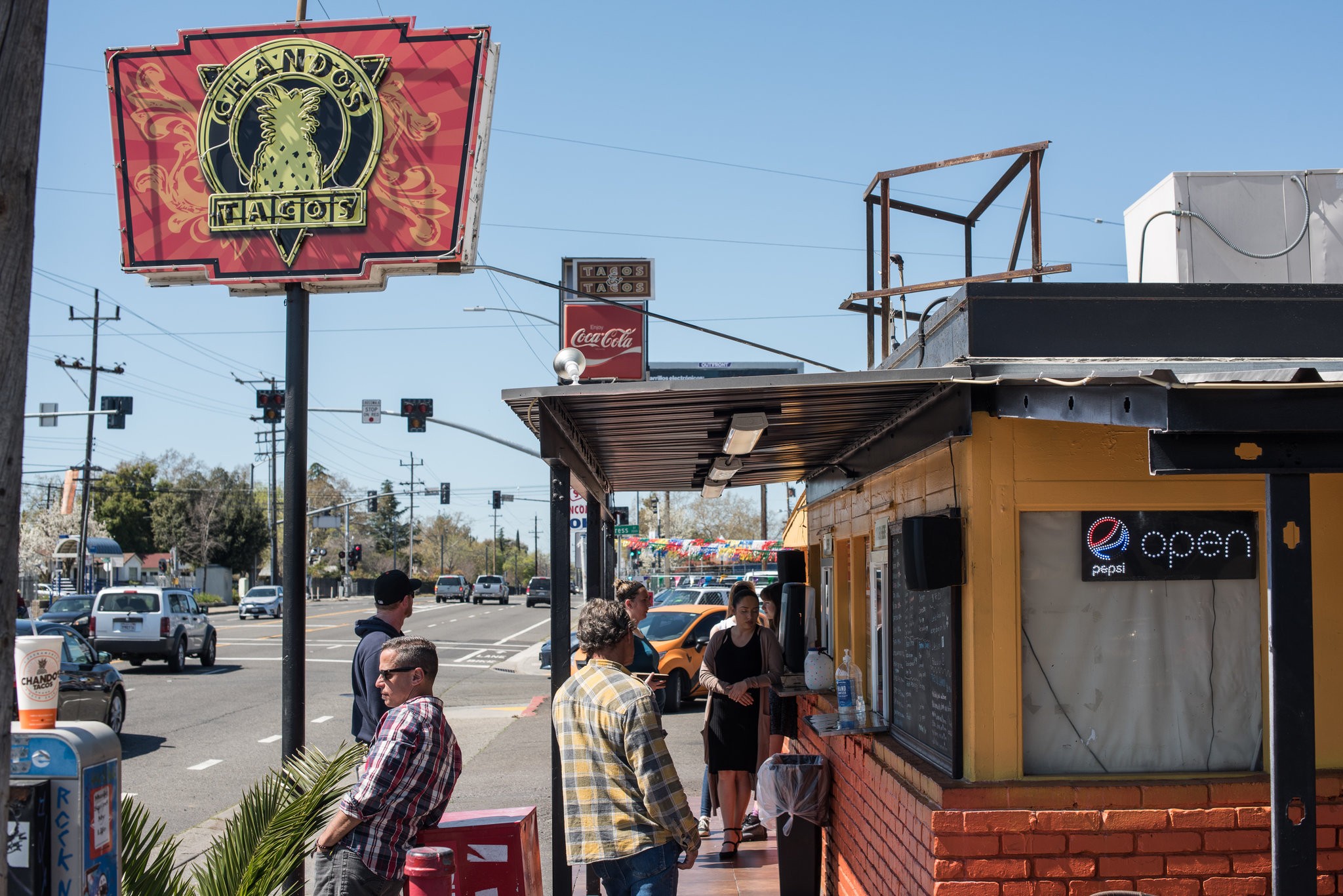
As a travel destination, California’s capital gets no respect. Despite sitting at the confluence of two impressive rivers, with sprawling shade trees that make much of the city feel like a leafy urban park, Sacramento has a misplaced reputation as a lowly, unattractive place. But the state’s oldest incorporated city — founded in 1849, the year before California joined the union — remains a lush oasis of bougainvillea and palms, prolific fruit trees and mighty oaks.
It also has a thriving cultural scene and architectural character all its own. Along with neighborhoods of midcentury modern homes, Craftsman Bungalows and ornate Victorians, there’s the birthplace of Tower Records (the Art Deco Tower Theatre and its kitschy, colorful Tower Cafe are both still operating) and the Crocker Art Museum’s bright white, modernist expansion, the 125,000-square-foot Teel Family Pavilion, which tripled the museum’s size in 2010. Unlike California’s glittering, glamorous coastal cities, Sacramento’s location in the Central Valley gives it an earnest, small-town affect and a welcome lack of pretension.
Friday
1) 3 p.m. LAY OF THE LAND
With few hills and wide, tree-shaded streets, Sacramento is an unusually bikeable city. The JUMP dockless e-bike share program ($1 for the first 15 minutes, 7 cents a minute after that) began just last month, but may become the best bet for getting around “the Grid” (as Sacramento’s core is known), Davis and West Sacramento.
The Crocker is the city’s must-see institution, but make your first stop the smaller California Museum ($9), which is based at the State Archives and is home to the California Hall of Fame, which, besides celebrating famous Californians, offers an overview of the state’s history from the Spanish missions era to Japanese internment during World War II, indigenous peoples to Hollywood’s Red Scare. Afterward, take a walk through the 40-acre, Victorian-style Capitol Park, where there is a trout pond, a cactus garden and a collection of native plants representing every county in this heterogenous state.
2) 4:30 p.m. CALIFORNIA CRAFTED
Cruise down to the R Street Corridor, a former railroad yard and industrial area, now home to intriguing shops and designers. For hyper-curated outdoor clothing and gear with a city-streets-meets-Redwood forests sensibility — think fleece sweatshirts in vibrant colors — head to the All Good flagship store, which also organizes hiking, surfing and bouldering trips in California and beyond.
Down the street, the Warehouse Artist Lofts Public Market has a small but enticing food court with excellent poke — the Hawaiian-style raw fish salad that’s sweeping California — at Fish Face Poke Bar and an exciting collection of shops: midcentury wares and records at Kicksville Vinyl & Vintage, where you can find everything from 45s to atomic age lamps; and fabulously retro vintage clothing at Old Gold. For admirers of bespoke clothing, Benjamins crafts shoes — like a $375 boot made of leather from the Chicago tannery Horween, which takes 16 to 20 weeks to deliver — on site.
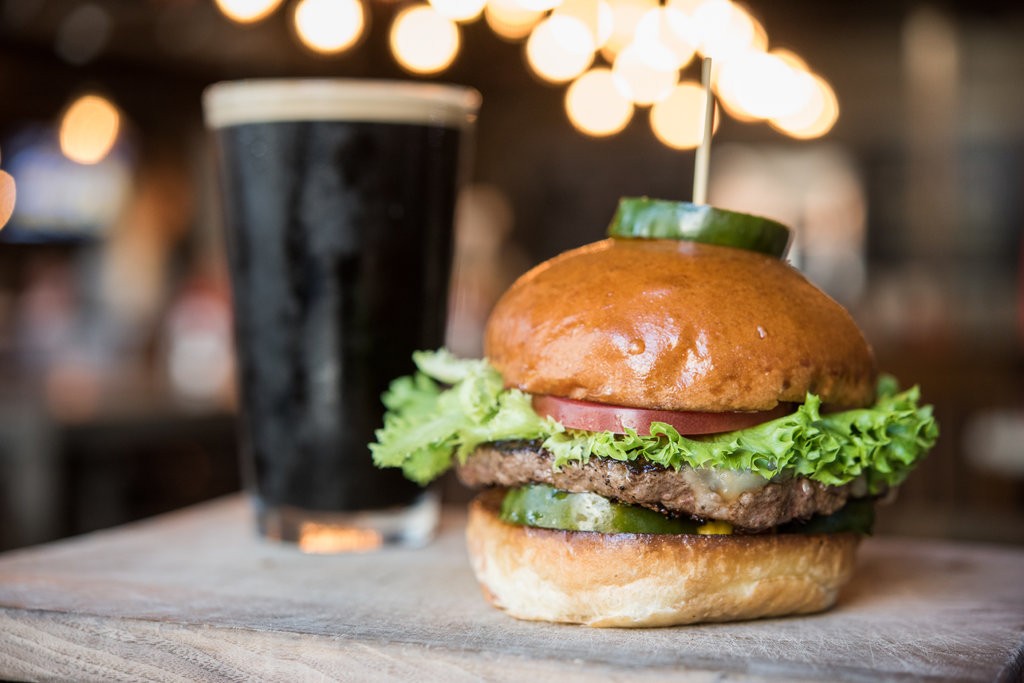
3) 5:30 p.m. BEER-THIRTY
Sacramento is flush with beer. Try New Helvetia, named for the city’s original moniker. The brewery has a neighborhood feel, complete with backyard picnic tables, a devoted running club and a resident mascot dog named Moose (there’s a session I.P.A. named in his honor). Bike Dog in industrial West Sacramento is popular with bicyclists, dogs and serious beer geeks.
For a funky outdoor beer garden with communal tables imported from Germany and a shipping container kitchen, Der Biergarten, has 32 taps of mostly German beer and a menu that includes classics like currywurst ($8.06) and schnitzel ($12.67). There’s even Sac Brew Bike, a mobile pub that tours beer bars and resembles a pedal-powered trolley that can seat up to 15 people. Tours start at $27 a seat.
4) 6:30 p.m. HAMBURGER HAPPINESS
Contrary to restaurant lore and signage, Broderick Roadhouse was not established in 1893. It actually started as a food truck in 2012 and, on the strength of its hamburger game, quickly grew into a small and beloved local chain. The original West Sacramento location retains the charm of a Western relic. If you come earlier for the 3 to 6 p.m. happy hour, the towering Old School burger and tap beer special ($10) is a steal.
5) 8 p.m. SHOWTIME
Catch a show at The Sofia Tsakopoulos Center for the Arts (tickets, $9 to $46), the new performing arts complex by the 30-year-old B Street Theatre. The two-theater venue includes both the 250-seat main stage and the 365-seat Sutter Theatre for Children, which will host “family series” shows at 1 p.m. on Saturday and Sundays. For serious post-theater cocktails, red velvet curtains, pressed tin ceilings, a horseshoe-shaped wooden bar and live music — blues, jazz, big band and country — on weekend nights (starting at 9 p.m.), Shady Lady Saloon may be Sacramento’s sexiest cocktail bar.
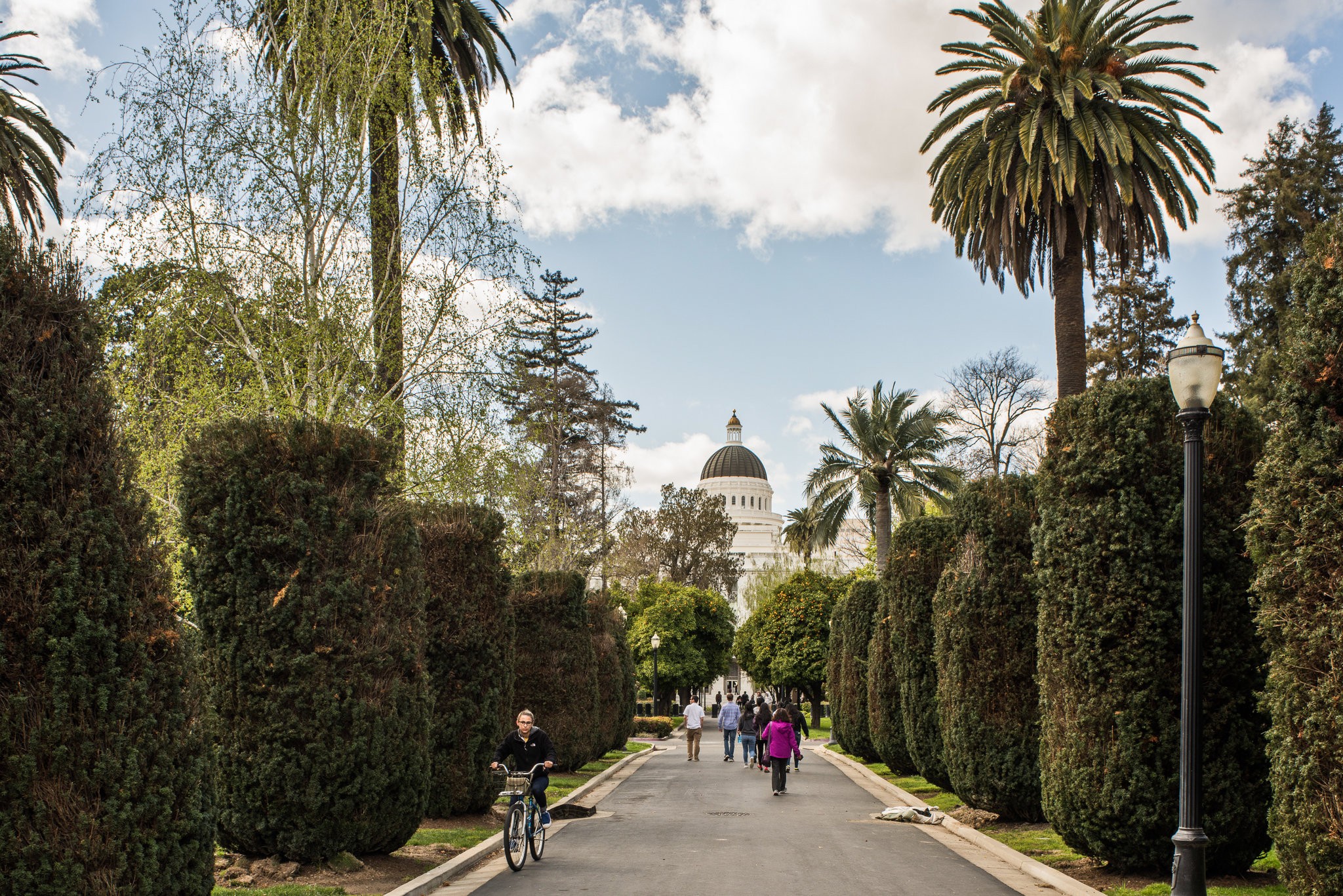
Saturday
6) 10 a.m. For the Road
Grab coffee at Temple Coffee Roasters, a highfalutin caffeine palace that opened its grandest location — which includes a floor hand-laid with 500,000 pennies — in 2016 in an 1880s building in the trendy Midtown neighborhood. Coffee snobs will find Kyoto slow-drip and a custom tap system for Nitrogen-infused coffees and teas. Then get a picnic lunch for the road at Roxie’s Deli & BBQ, an East Sacramento corner store with a retro feel and sandwiches that will feed two adults for less than $10. A local favorite is the messy Meatball Mafia sandwich ($9.65) with smashed meatballs, provolone and Parmesan cheeses, topped with tomatoes, onions and jalapeños.
7) 12 p.m. GET OUTTA TOWN
The paved, 32-mile Jedediah Smith Memorial Trail starts in Old Sacramento’s Discovery Park and travels along the American River, a tubing hot spot during the scorching summer months. Stop at the Nimbus Hatchery, which raises steelhead trout and Chinook salmon, and has a nature trail. If you’re up for an ambitious ride (or a short drive), continue all the way to the town of Folsom — of Johnny Cash prison song fame — which is loaded with Gold Country character.
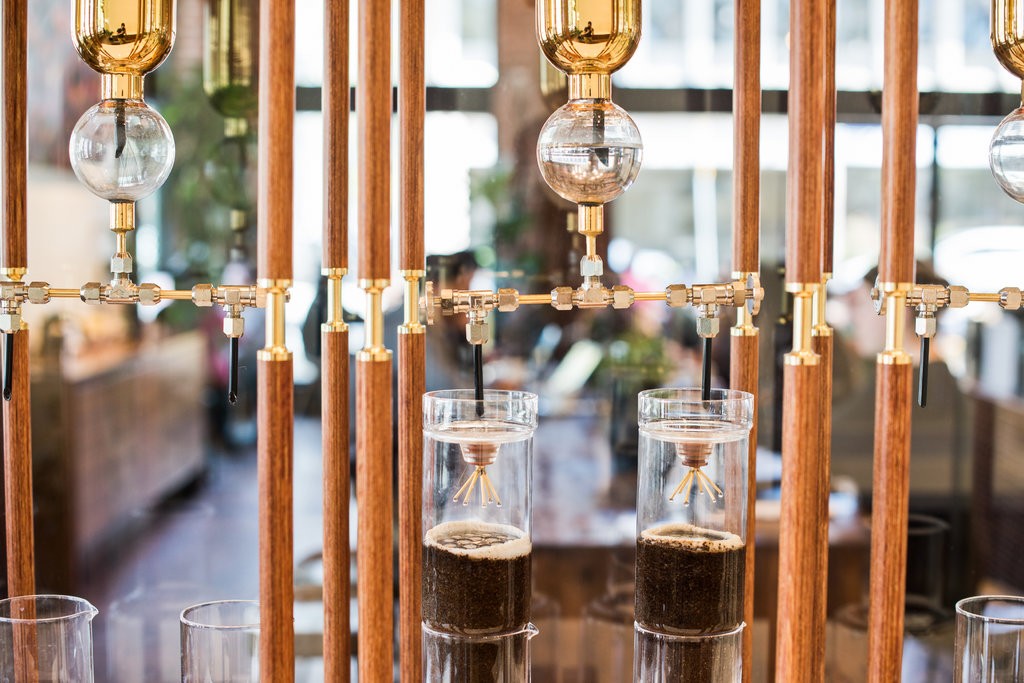
8) 5 p.m. TACOS AL FRESCO
For a quick, quintessentially California snack, head to Chando’s, a small local chain of taco stands where you can grab three flavorful street-food-style tacos — like “The Ensenada,” with fried fish and cabbage, birria (spicy stewed goat) and vegetarian options like spinach or potato — and a fountain drink for just $7.49. Take your meal to the recently renovated pond at nearby McKinley Park, where 1,200 rose bushes in bloom from March through May. The garden was featured in Greta Gerwig’s 2017 film “Lady Bird”— a love letter to her hometown — which has inspired walking and running tours of the film’s locations.
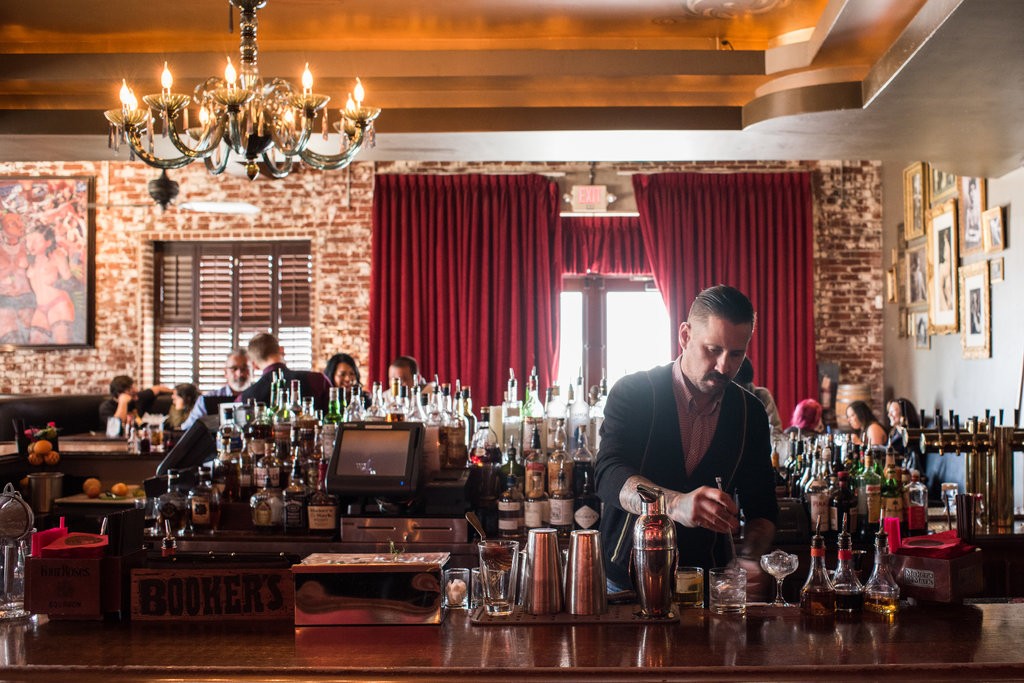
9) 7 p.m. STADIUM CITY
Many cities have beloved sports teams, but few treat sports events — even minor league baseball games — as much like a night life activity as Sacramento, where eating a Merlino’s freeze while watching a River Cats game at West Sacramento’s Raley Field is a favorite way to spend an evening. In 2016, the country got its first solar-powered sports stadium when the Golden 1 Center opened in Sacramento, transforming the city’s downtown with an indoor-outdoor design that includes five towering, fully-retractable glass doors. The $500 million-plus arena hosts the Kings N.B.A. team, as well as big-name musical acts like Paul McCartney, Ariana Grande and John Mayer.
10) 10 p.m. PLAYING WITH FIRE
In the Southside Park neighborhood, Binchoyaki is a sassy little izakaya, where perky 1960s-era oldies play and the open kitchen makes the compact dining room feel like a party. Specializing in Japanese-style charcoal grilled skewers, the restaurant serves salty, umami-packed bites of pork jowl, chicken gizzard, beef tongue, bacon-wrapped enoki mushrooms and more (starting at $1.50). A testament to the restaurant’s mom-and-pop, handmade impulse, the bar is lined with planter trays sprouting mung beans and pickling jars of beet-colored daikon and shochu liquor infused with umi (plum). From 10 p.m. to midnight, there’s a $1 oyster happy hour on weekend nights.
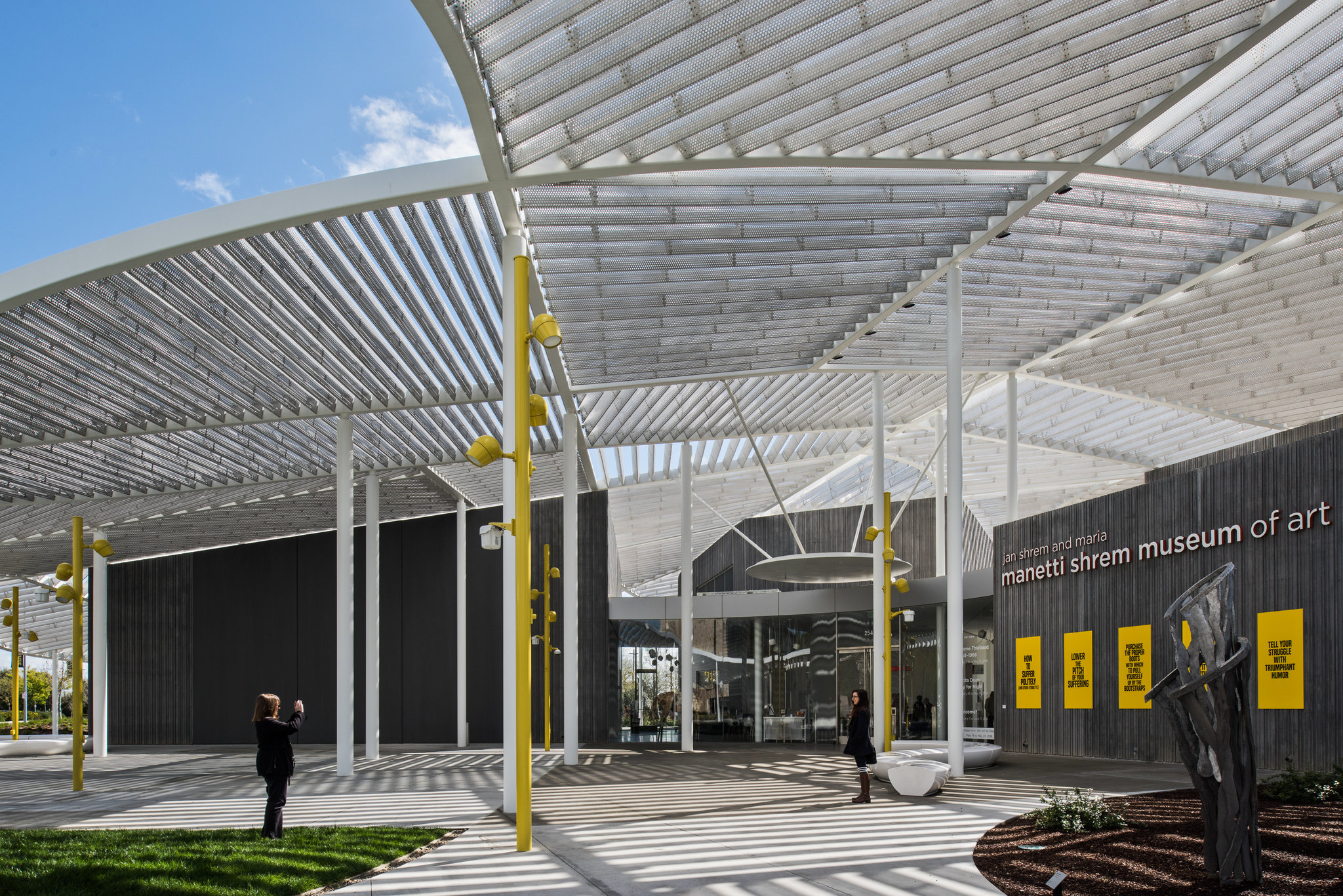
Sunday
11) 8 a.m. THE THREE Bs
Bacon & Butter, in the Tahoe Park neighborhood, is worth both the trek and the inevitable brunch lines. The seasonal menu changes frequently, but might include, as it has in the recent past, a FGT benny (fried green tomato and ham hock with baby arugula, poached eggs, corn and béarnaise sauce, $15) and chili verde hash with tomatillo-stewed pork butt, black beans, pasilla chile, eggs, baby squash and corn ($17). After breakfast, head to Asha Urban Baths, an Old World-style, coed, swimming suit-required bathhouse with a soaking pool, sauna, steam room, sauna and cold plunge. Drop-in admission is $25.
12) 12:30 p.m. ALL ABOARD FOR ART
Head to Amtrak’s Sacramento Valley Station, a 1926 Renaissance Revival train station that just received a major face-lift, and hop the Capitol Corridor train 15 minutes west to the college town of Davis. From the 1913 Mission Revival Davis Station, it’s a 20-minute walk to the new Jan Shrem and Maria Manetti Shrem Museum of Art, which opened in 2016 at the University of California, Davis. The museum’s porous, light-filled Grand Canopy design is itself a work of art. A recent exposition included John Cage’s first participatory composition, “33 1/3,” which debuted at U.C. Davis in 1969.
LODGING
Kimpton opened its first Sacramento property, The Sawyer Hotel (500 J Street; 916-545-7100; sawyerhotel.com) last year. Each of the 250 guest rooms (starting at $159) are pet-friendly and equipped with a yoga mat, while the third-floor pool has cabanas and views of the Golden 1 Center.
HI Sacramento Hostel (925 H Street; 916-668-6631; hiusa.org) is an exceptional option for budget travelers. Housed in an 1885 Victorian mansion, just blocks from downtown’s César Chávez Plaza, where there are concerts in the park during the summer, a bed in a shared dorm costs just $32, while private rooms start at $56, breakfast included.
If you do plan a trip to the Sacramento, check out these suggestions on what to pack for the trip from our colleagues at Wirecutter.
Guadalajara for foodies
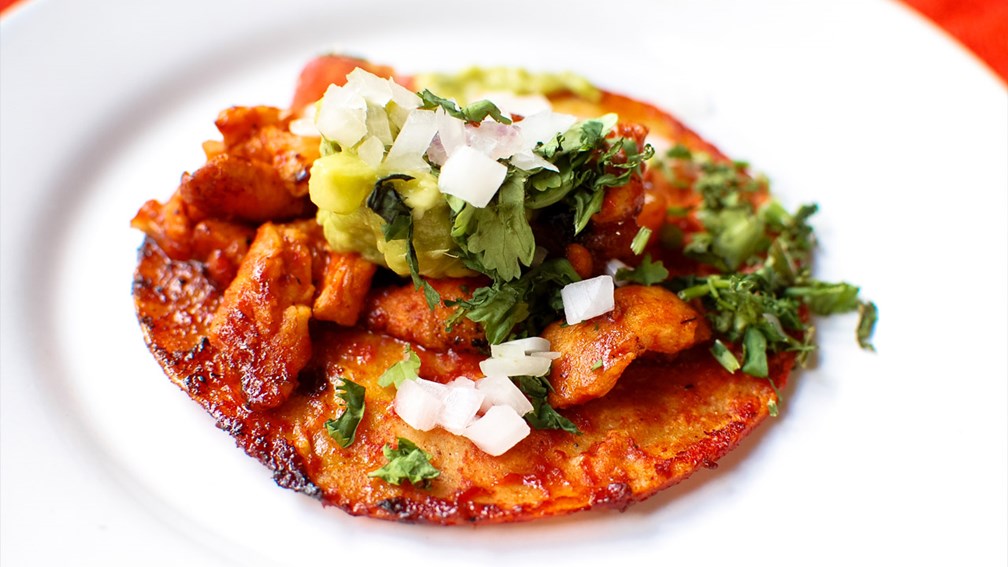
Mexican cuisine is so popular that many people might assume they’ve tried all the best dishes, even if they’ve never stepped foot in Mexico. But even the most experienced gourmands will find new experiences in Guadalajara, a metropolis with a distinct flair for creating its own unique culinary style.
In fact, food has become such a selling point for this city that it’s about to host the first-ever Semana del Restaurante(Restaurant Week), from July 13-23. As of press time, 58 restaurants had confirmed participation in the event, and an array of special lunch and dinner options are in the works. Among the host venues are I Latina, a trendily casual eatery that serves popular Mexican dishes, and Hueso, a stylish restaurant where the decor — which features more than 10,000 real bones — attracts almost as much attention as the contemporary Mexican and fusion cuisine.
Even if you can’t visit during the event, it’s possible to savor the creativity of local and international chefs at the participating venues year-round. As the capital of the state of Jalisco, Guadalajara is Mexico’s second-largest city and a hub for authentic regional cuisine as well as 21st-century sophistication. From simple street food to upscale dining, Guadalajara offers myriad options for hungry travelers.
Both pre-Hispanic and Spanish colonial influences play a role in the dishes most revered by Tapatios (as Guadalajara natives are called). Among the local must-try meals is the torta ahogada, literally a “drowned sandwich,” so named because it’s bathed in a sauce made from dried chili pepper or tomatoes. Fried pork and chicken are the most common fillings in this very satisfying treat, accompanied by radishes and avocados. Local legend claims that this particular torta is the perfect remedy for a hangover, possibly making it a good option for anyone who spent the previous night sampling excessive amounts of the popular distilled beverage made in the nearby town of Tequila.
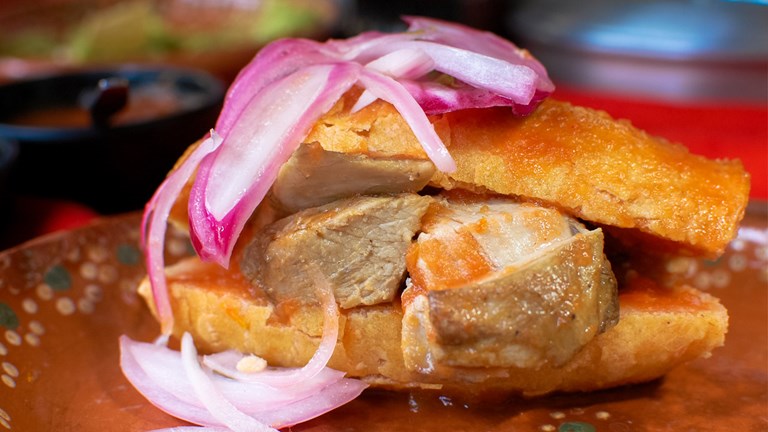
Another local favorite is birria, a spicy stew made with goat meat, mutton, beef or chicken. Especially popular for special events and holidays, this tasty dish is nevertheless available on a daily basis at many restaurants. Travelers will find multiple opportunities to taste birria at las Nueve Esquinas (Nine Corners), a scenic plaza downtown where several restaurants specialize in the dish. At Birrieria Las 9 Esquinas, for example, diners can dive into the healthy portions of birria and also sample barbecued lamb, machito (goat tripe) and cochinita pibil, a savory pork dish that originated from the state of Yucatan.
Food tours are a good way for visitors to get an overview of the local dining scene. A company called Guadalajara Food Tours offers the GDL Taste Tour, a guided excursion downtown that includes tastings at a number of venues, including Las Famosas Tortas Ahogadas, a restaurant that specializes in the drowned sandwich, and Fonda San Miguel Arcangel, which focuses on “high Mexican cuisine,” with seafood and beef among the specialties. Another company, Pitaya Food Tours, complements its tastings with a visit to a food market, where local residents and chefs buy meat, seafood and produce.
Nearly every city tour — whether food-oriented or not — includes a visit to Mercado San Juan de Dios, which locals claim is the largest indoor market in Latin America. Among its hundreds of vendors are food stalls that sell cheap and tasty Mexican dishes.
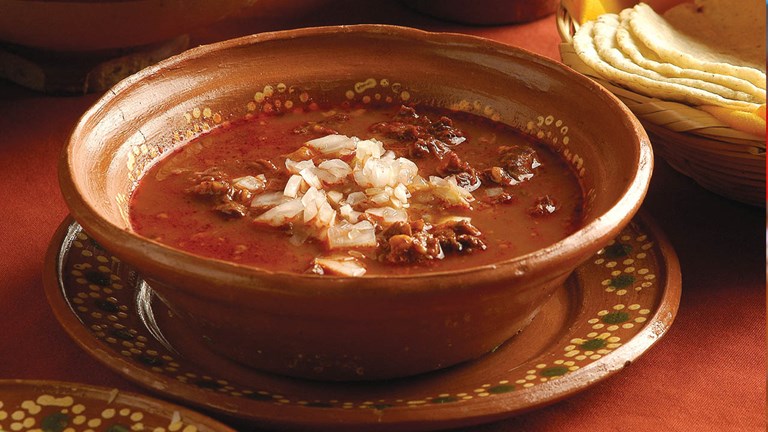
Mexican Food Tours offers a slightly different experience. Its three-hour Tlaquepaque Food Tour provides a culinary introduction to the tourist-popular Tlaquepaque neighborhood, with visits to a market and samples of classic cuisine including birria, tortas ahogadas, accompanied by tequila and tejuino, a cold drink made from fermented corn.
With so many mouthwatering options in Guadalajara, it’s unlikely any visitor will go home hungry.
What’s new in wellness, activities, lodging in Aspen
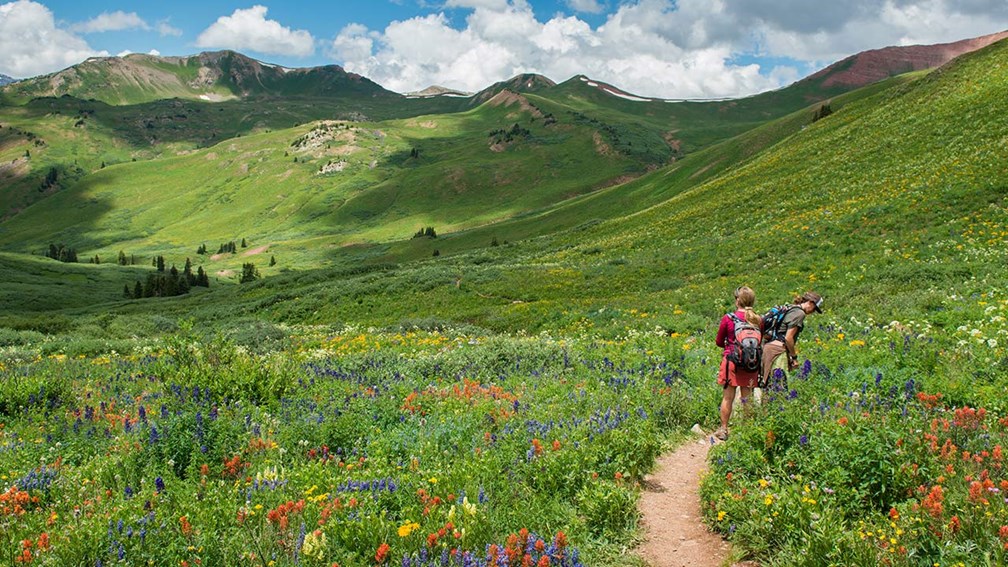
“You want the board to move — not the paddle,” said Conor Flynn, my stand-up paddleboarding (SUP) guide.
We were heading downstream on the Roaring Fork River in Aspen, Colorado’s Northstar Nature Preserve, and I was struggling to keep up with Flynn and my partner who, cue eye roll, is as natural at sports as I am awkward.
I considered Flynn’s message as I thrashed my paddle in the wayward water; surely, he was speaking in code.
Like a bowling ball in a lane outfitted with bumpers, I ricocheted from the right side of the river to the left, lifting my paddle out of the water and pushing it into caked-together dirt for support. I could feel the gaze of two women chatting in hushed tones on a distant bridge.
Unlike SUP in the ocean, the river sport requires a keener sense of navigation and a true awareness of obstacles. If I wanted to keep from zigzagging, or avoid coming down to my knees at the site of protruding rocks, a change in current or another person, I needed to unlearn my default paddle technique.
“That’s a great stroke, man,” said Charlie MacArthur, the founder of Aspen Kayak & SUP Academy, the company I was paddling with. Outside Magazine credits MacArthur — an extreme sports athlete who’s also an expert skier and kayaker — with developing “techniques and gear that made SUP accessible to everyone.”
We intercepted MacArthur on his way upstream, and though I’d begun to “go with the flow” a bit more, the compliment was for my partner, who had already advanced to practicing a surf stance on his board.
MacArthur seemed to float. Even though he had just returned from teaching SUP instructors in Japan, he was chatty and radiating vitality.
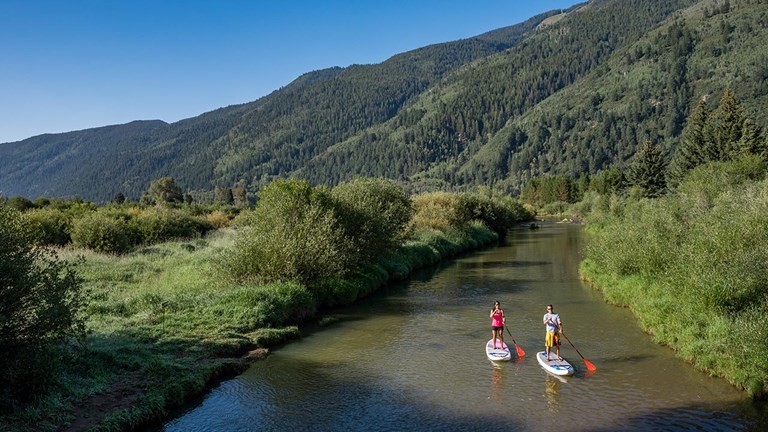
Throughout my visit to Aspen, I kept bumping into men and women as impressive and inspiring as MacArthur.
Julia Douglas, the Aspen-based founder of JetSet World Travel and the Axus Travel App (acquired by Northstar Travel Group, the parent company of TravelAge West), says her clients are always surprised by “how hospitable, genuine, joyful and understated the locals are.”
And that’s what I found, too. The community of about 7,000 full-time Aspen residents are consummate outdoorspeople happy to share the slice of alpine paradise they work hard to live in.
In addition to impressive and entrepreneurial year-round residents, celebrities and corporate executives consider Aspen their retreat, as well. At least 50 billionaires own homes in Aspen — and real estate prices reflect that. Last year’s annual list of America’s Most Expensive Zip Codes, compiled by Altos Research for Forbes, lists Aspen as the No. 12 most expensive destination (median home price: $5,849,184). Neighboring town Woody Creek holds the No. 7 spot with a median home price of $6,651,269. For reference, Los Angeles’ most expensive zip code — 90210 — is No. 8 on the list.
“The wealth in our community supports urban culture to exist in this rural setting,” said Nina Gabianelli, vice president of education and programs for Aspen Historical Society.
Indeed, if you were plucked from your home and dropped in downtown Aspen, you might not realize you’re about a four-hour drive from Denver in a remote location surrounded by the Rocky Mountains, some 8,000 feet above sea level.
“Aspen is ‘at the end of the road’ off Highway 82,” Douglas said. “Once you pass through town, you continue up Independence Pass over the Continental Divide without passing through another town for more than an hour.”
Yet, in the span of about six blocks, there are some 200 art galleries and retail boutiques, 80 restaurants and bars and eight cannabis dispensaries. The town’s music venue, Belly Up, only fits 450 people yet attracts top-tier acts, from dance-rock band LCD Soundsystem and indie-rock group Cold War Kids to rapper T.I. and DJ Diplo (and that was this past winter alone).
“Aspen is the only destination in the world with such a cosmopolitan cultural community directly at the base of a mountain,” said Brian Payntar Harris, founder of Aspen Travel Advisors. “Add to that a highly degreed, traveled and multilingual population, and you have a very special place indeed.”
And it’s clear that word is spreading. The Aspen Chamber Resort Association Marketing Fund passed in 2010, and destination marketing began in 2011. Summer occupancy grew from 56 percent in 2010 to 72 percent last year. Winter occupancy (71 percent) was up by 10 percent compared to 2010.
Travel advisors have a lot to gain when it comes to Aspen. According to Jill Canning, director of travel agency sales for Ski.com, Aspen Snowmass vacations for Ski.com booked through a travel advisor “averaged 92 percent higher sales than consumer direct bookings.”
And while it’s possible to create midrange vacations utilizing the destination’s condominium and rental properties, there’s no denying that high-end travelers are a perfect match for Aspen.
“We focus exclusively on the high-end market, and Aspen certainly caters to these types of travelers,” Douglas said.
A Renaissance
Aspen did not develop as an outdoor utopia, cultural hub and epicenter of wealth by accident.
Though the Ute people claim to have always resided in the Roaring Fork Valley, Aspen attracted new residents in 1879, three years after Colorado became a state. Silver was discovered, and soon, Aspen was producing one-sixth of the nation’s silver.
“Aspen is the only destination in the world with such a cosmopolitan cultural community directly at the base of a mountain.”
I learned this like I learned most other things in Aspen: outside. In this case, I was ascending the Hunter Creek Trail with Grayson Bauer, a naturalist with Aspen Center for Environmental Studies (ACES), who pointed out dynamite markings on rock while explaining that the trail we were walking on was originally developed for wagons.
I wondered aloud if the men who created the trail were exploited, but Bauer explained that it was the contrary. At its peak, Aspen was home to more than 12,000 citizens and enjoyed public electricity and its own opera house and hotel (Wheeler Opera House and Hotel Jerome, respectively).
Sadly, Aspen went bust in 1893 following the demonetization of silver by the U.S. government. For decades, fewer than 1,000 residents remained in Aspen — until it was rediscovered, embraced and reimagined by Walter Paepcke, chairman of the Container Corporation of America, and his wife, Elizabeth. The Paepckes are local legends in Aspen and widely credited with laying the groundwork for what the town is today.
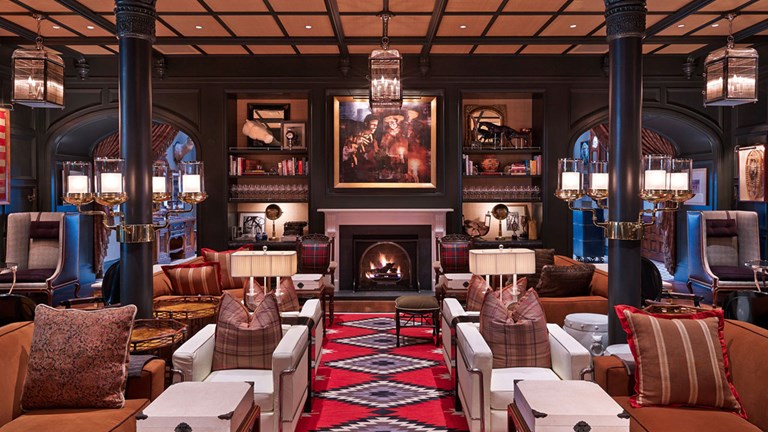
Paepcke founded Aspen Skiing Company in 1946 and dedicated the world’s longest chairlift by 1947. But he wanted to position Aspen as a cultural center, too: In 1949, he invited a group of artists and intellectuals to town for the Goethe Bicentennial Convocation and Music Festival to honor the life and work of German writer Johann Wolfgang von Goethe. Two-thousand people attended, and later that year, Paepcke founded the Aspen Institute for Humanistic Studies.
Many organizations grew out of the Aspen Institute, such as the Aspen Music Festival and School, Aspen Center for Physics and the former International Design Conference of Aspen.
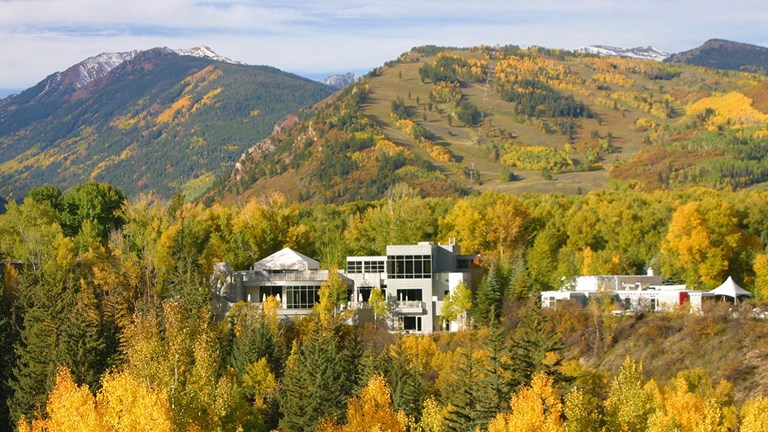
Mind, Body and Spirit
The Paepcke era gave rise to the “Aspen Idea” that the area could be the ideal location for the integration of the mind, body and spirit for the greater good.
“As a community, if you’re each whole and at your best, then you’re better able to help others be their best,” said Gabianelli of Aspen Historical Society. “As a community, we live and support each other.”
Spend any time in Aspen, and you’ll quickly learn that the Aspen Idea remains both a magnet and a guiding light to its citizens and visitors.
“This philosophy is why I’m still here,” said Harris of Aspen Travel Advisors, who moved from Chicago to Aspen in 1999. “It’s a fundamental tenet of what the Paepckes envisioned for the new Aspen: a multidisciplinary college of nature, drawing the best minds from around the world.”
Aspen is also not a place that rests on its laurels. Thanks to a discerning clientele and a competitive marketplace, old concepts are routinely replaced by innovative businesses, from an underground feminist events space contained in the walls of Aspen’s oldest building to a wellness hub featuring hemp-oil treatments and a post-massage oxygen bar.
In Aspen, visitors can strengthen their mind, body and spirit in both new and time-tested ways.
Mind
When it comes to strengthening the connection between the mind and body, few things are better than yoga and self-care. In Aspen, the bar is set high — in 2014, Travel + Leisure readers named St. Regis Aspen’s Remede Spa the No. 1 Spa in the U.S. But now, there’s more.
Near Aspen Mountain’s Gondola Plaza is the new location of O2, which features a white-and-gray color palette that helps create a breezy and chic vibe. The space features a boutique of on-trend athleisure digs, such as Stella McCartney sneakers; a Pilates and yoga studio with views of Aspen Mountain; and three treatment rooms. My CBD-oil body work was unlike any I’ve ever received — instead of going through a rehearsed choreography of motions, my therapist applied numerous techniques to get my hips, shoulders and even ribs in order. Post-massage was just as good, featuring an oxygen bar to complement tea and snacks.
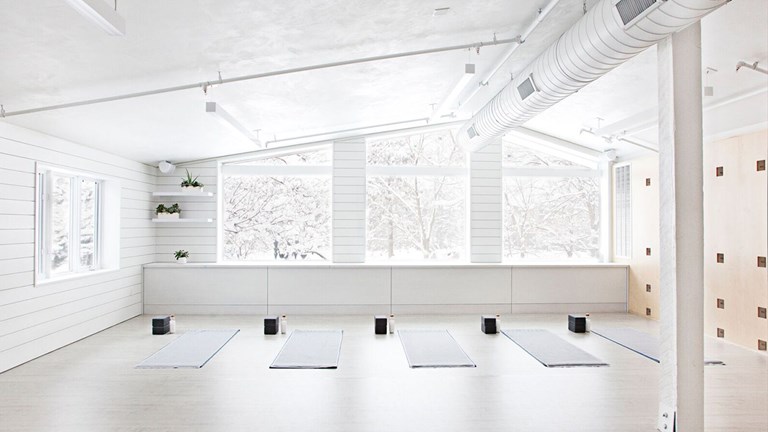
Another newly relocated wellness destination is Aspen Shakti, which communicates a warm, whimsical vibe thanks to bold use of color, hand-painted spiritual quotes on walls and layering of eclectic pieces throughout. Aspen Shakti offers treatments and yoga and meditation classes, ranging from a classic vinyasa flow to Thug Yoga (a “gateway” class that includes rap and EDM music and a beer from Aspen Brewing Company).
The yoga room is among the most beautiful I’ve practiced in, featuring one stone wall and one mirrored wall accented by cascading sparkling lights — but most folks won’t want to miss the opportunity to practice with Aspen Shakti at the 11,212-foot summit of Aspen Mountain. The hourlong, all-levels summer classes kick off June 18 and are offered Monday through Friday at 10:30 a.m. Participants are required to purchase a $35 gondola lift ticket, though the class itself requires only a $5 donation.
“Mother Nature is hugely in her magnificence in Aspen, so when we take a moment to slow down, connect and bring the body, mind and spirit into alignment, we naturally feel the sensation of connection, possibly even to a larger source and spirit,” said Lucy “Lea” Tucker, who handles public relations and marketing for Aspen Shakti. “I believe this sense of connection, oneness and aliveness is exactly the untouchable feeling upon which Aspen was founded.”
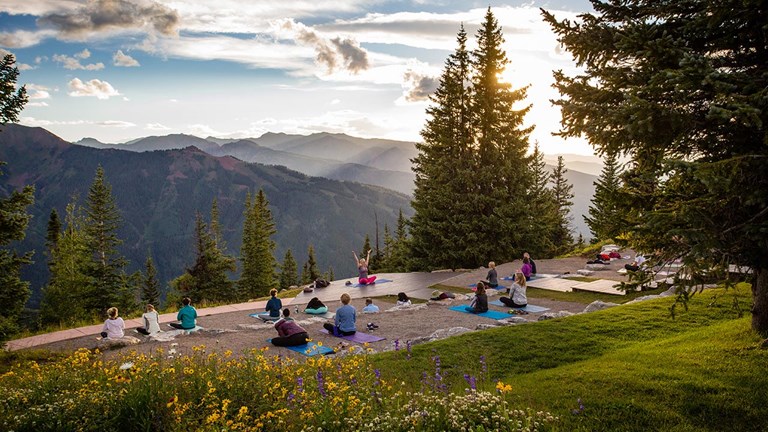
Aspen was also created to be a destination for intellectual pursuits, music and the arts. Guests at Aspen Meadows, home of the Aspen Institute, can trace the city’s relationship with the Bauhaus art movement to artist Herbert Bayer, who designed the property and whose work can be found throughout. Surrounded by mountains and trees, the campus-like Meadows is ideal for group meetings and has hosted nearly every brilliant mind alive, from Michelle Obama to the Dalai Lama. Today, Aspen Institute holds numerous workshops and seminars and, most notably, the Aspen Ideas Festival, in partnership with The Atlantic magazine, in June.
And while there are numerous art galleries around town, the No. 1 place to view contemporary work is Aspen Art Museum, which was relocated in 2014. The new building by Pritzker Prize-winning architect Shigeru Ban houses just the right amount of art, illuminated by thoughtful docents (ask for Michelle Dezember). Be sure to visit the sculpture garden on the rooftop deck, which is also the setting for So cafe. With its front-row view of Aspen Mountain, a new menu each week and a strong matcha latte, the cafe is the ideal place to reflect on the art below.
Of course, this is Colorado and, as of 2013, there have been other ways to expand the mind here. Aspen has embraced the legal standing of cannabis with eight unique shops. For a vibe that complements the town’s many luxury boutiques, head to Silver Peak, one of the first dispensaries to embrace a high-end and conceptual retail space for the sale of cannabis and related paraphernalia.
For those who prefer to receive therapeutic benefits via shopping, the amount of high-end clothing stores, ranging from Lululemon to Louis Vuitton, is staggering. Because of Aspen’s affluent clientele, many say its thrift stores — such as The Little Bird — are among the best locations for scoring deals on last season’s designer pieces. Another shop that’s worth a stop is Kemo Sabe, a western retailer that sells (and brands) high-quality cowboy hats and boots. Though Kemo Sabe has shops in Vail, Colo., and Las Vegas, the Aspen location recently moved to a two-story space, which includes Americana memorabilia and a vintage bar dating from the 1800s.
Maybe it’s the altitude or maybe it’s my love of the outdoors, but when my hiking guide told me to lick my finger and touch a tree, I found myself doing just that. I swiped downward on the bark, which produced a tan chalk on my finger.
“This is like the Aspen tree’s sunscreen,” said ACES’ Bauer, who, during a one-hour hike, taught me more about trees than I’ve ever learned in my entire life.
Nature here is amazing: The tree line reaches for infinity. Treetops seem to brush the clouds.
For those who want to understand Aspen’s environment, visiting ACES’s 25-acre nature reserve at Hallam Lake — and chatting with an on-site naturalist — is a must. Kids and adults alike will enjoy walking around the lake, where they might spot a coyote, fox or bear. An ambassador of the space is an injured golden eagle that, according to Bauer, has “retired in Aspen, which is everyone’s dream.”
In the winter, one can snowboard and ski at four resorts with one all-inclusive pass. There’s iconic Aspen or “Ajax” Mountain, recommended for intermediate and advanced skiers; Buttermilk, which is ideal for beginners and intermediates (and especially popular for uphill skiers); Aspen Highlands, home of the beloved Highland Bowl, a double-black diamond bowl that requires a hike to reach but delivers with numerous runs; and Snowmass, the area’s largest mountain with varied terrain perfect for both beginners and experts.
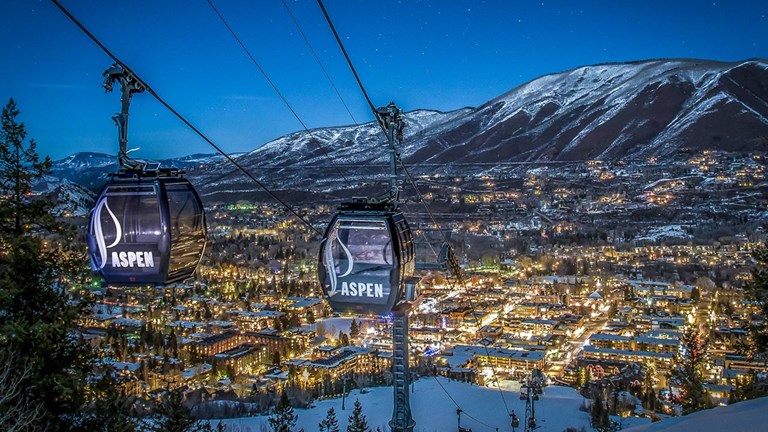
During the spring, fall and summer, there’s hiking, biking, SUP, fly-fishing, four-wheel driving, whitewater rafting and anything else people come up with.
The Breathtaker Alpine Coaster, launched during the 2017-2018 winter season in Snowmass, travels through more than 1 mile of forest at up to 28 mph. The coaster is part of the new Lost Forest adventure course; the rest of the park will open this summer and consists of eight ziplines, a climbing wall, a ropes course and nature trails.
While locals also recommend visiting Independence Pass, Maroon Bells is the No. 1 bucket-list item on most Aspen itineraries, and it perfectly encapsulates the range of activities that can be done in the area. Photographers dream of capturing the two peaks (aka “the Bells”) framed by trees and replicated in Maroon Lake. Some prefer to trace the view from every angle as they walk the mile-long perimeter of Maroon Lake, especially during the fall, when the trees brighten with golden colors.
Bauer recommends hiking to Crater Lake, a 3.6-mile roundtrip trail that delivers equally impressive views.
“Without a terribly difficult hike you get to see marmots and pika, which normally live in rather remote places,” he said. “It also gets you away from the crowds and puts you at the foot of the Bells, which are bigger than can be described.”
Another popular activity is a 12-mile downhill bike ride from Maroon Bells, a half-day activity that can be arranged by local tour operator Blazing Adventures.
The most intrepid and fit of them all can attempt summiting North and South Maroon Peaks, two of the hardest “fourteener” (14,000-foot peaks) hikes in all of Colorado.
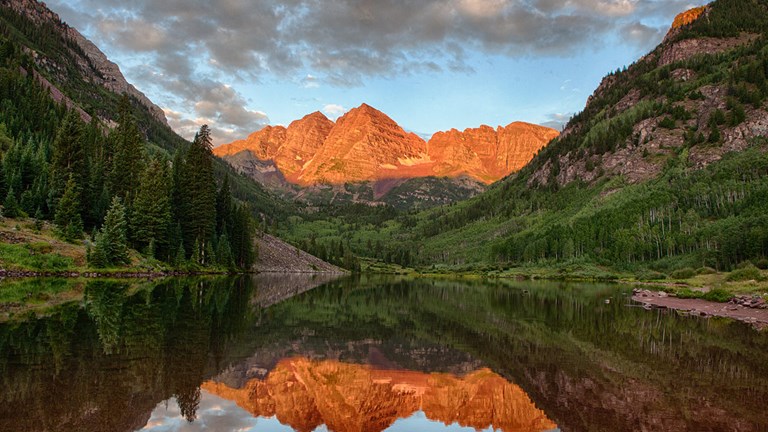
Food and Spirits
Aspen’s mind-body-spirit philosophy puts a strong emphasis on the health of the individual. Some eateries almost exclusively serve nutritious fare, such as Jus Aspen, a smoothie and salad spot that opened in early 2017, and Spring Cafe, a bright and casual organic vegetarian eatery that has most food allergies covered.
More common are restaurants that include a full range of healthful and decadent choices. White House Tavern, located in a historical miner’s cottage, is one of Aspen’s busiest restaurants, and it toes the line well — on one end of the spectrum is the Macho Salad, filled with rotisserie chicken, dates, freshly shucked corn, goat cheese and avocado; and on the other end is the restaurant’s famous Chicken Sandwich, starring a hulking slab of fried chicken topped with spicy slaw in between thick homemade torta bread.
While White House harks back to days gone by, Meat + Cheese features a modern look that puts its dairy and booze at the heart of the restaurant. Don’t leave without ordering the restaurant’s exceptionally smooth Jalapeno Margarita, made with a dangerously delicious pineapple-and-jalapeno vodka.
Aspen locals are proud of their apres-ski (or apres-hiking, -biking, etc.) options — and since these social drinking hours typically follow intense physical activity, it’s basically a wash. There’s the bar at Steakhouse No. 316, which may be the No. 1 place to bring a date thanks to moody lighting and a sultry aesthetic, and The Little Nell’s Ajax Tavern, which is located slopeside and serves a wagyu cheeseburger with a side of truffle fries, beautiful views and epic people watching.
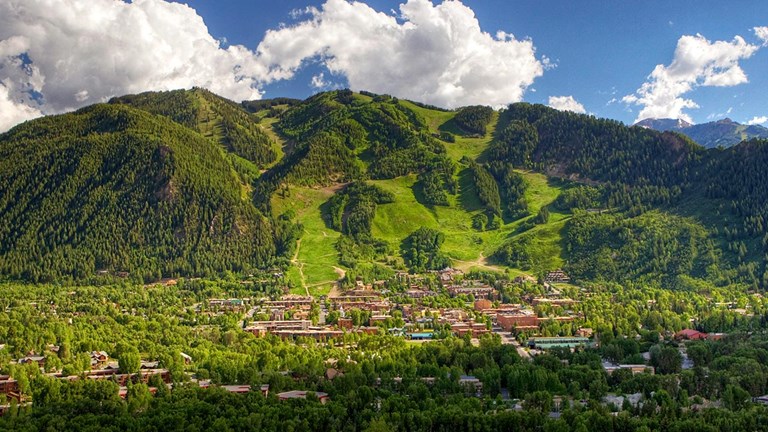
To truly indulge, time a trip with the Aspen Food & Wine Classic, which takes place in June and organizes wine tastings, cooking demonstrations with celebrity chefs and more.
Fans of “Fear and Loathing in Las Vegas” author (and former Aspen resident) Hunter S. Thompson will want to check out his old haunts. There’s J Bar at Hotel Jerome, Auberge Resorts Collection, a storied watering hole famous for selling spiked milkshakes during Prohibition and later serving as Thompson’s unofficial office. It’s even easier to imagine the counterculture hero fitting in at Woody Creek Tavern, a kitschy dive featuring year-round multicolored Christmas lights and walls slathered in Polaroids.
But this is Aspen — and even an homage to a rabble-rouser is best paired with physical activity and immersion in nature.
Locals say that biking to the tavern is a must — as is cross-country skiing (or snowshoeing or sleighing) to Pine Creek Cookhouse at the base of the Elk Mountains.
And I can see why: Trekking through the snow or biking alongside trees to reach a venue in the wilderness is just what you do here. It’s the idea of Aspen.
Viceroy Los Cabos makes its debut
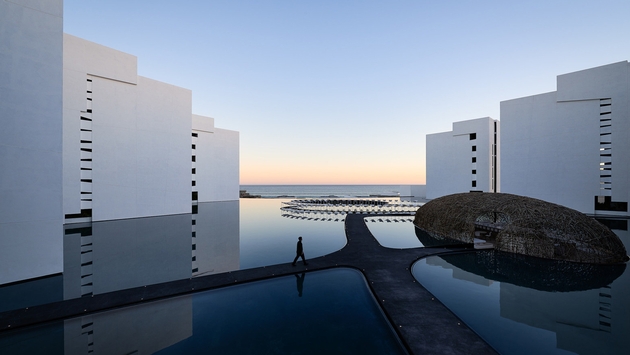
Los Angeles-based hotelier, Viceroy Hotel Group, has opened its 15th property.
The Viceroy Los Cabos in Mexico is the latest addition to the hotel company’sIcon Collection and features a futuristic design from Mexico-based architect Miguel Angel Aragones. The property was originally launched as the Mar Adentro but has re-emerged after renovations and enhancements by the Viceroy group.
The 194-room property is located in the heart of San Jose del Cabo on the coast of Baja California. The redesigned resort features a new beachfront pool and bar, a refreshed lobby and arrival experience, enhanced dining venues and a state-of-the-art fitness center curated by Los Angeles-based celebrity trainer Harley Pasternak.
“The much-anticipated opening of Viceroy Los Cabos marks an extremely monumental day for our brand,” said Bill Walshe, CEO of Viceroy Hotel Group.
“I look forward to welcoming guests to this extraordinary resort as we endeavor to create inspiring adventures that will stay with them for a lifetime,” Walshe added. “The resort stands out as provocative and sensational. It furthers Viceroy’s quest to deliver highly individual, modern luxury experiences in the world’s most sought-after destinations.”
Owners Andre and Felipe Chico, managing partners at Rodina, welcomed the opening.
“As proud owners of Viceroy Los Cabos, we are thrilled to collaborate with Viceroy. This stunning and unique resort will elevate the already-impressive reputation Los Cabos has as the ultimate destination for sophisticated adventurers,” they said.
Viceroy currently operates one other property in Mexico, the Viceroy Riviera Maya in Playa del Carmen, and is expanding all over the globe with new properties coming in Serbia, Argentina, Panama, Portugal and Vietnam.
The latest happenings in New Orleans

New Orleans’ tourism numbers continue to grow. In 2017, the city enjoyed a more than 6 percent increase in visitors and direct tourism spending.
It’s one reason why NOLA’s tourism market has been expanding for the past few years, adding new hotels, restaurants, events and more. In addition, there are several new flights into and from the city, and plans are in the works to redevelop the 3.2 miles of riverfront that includes parks and building renovations. Here’s a look at the latest in New Orleans.
On the Ground
New to the city’s growing hotel scene is The Eliza Jane, which is situated in a 19th-century Central Business District building that once housed the area’s Picayune newspaper. The hotel is named for the newspaper’s first female publisher, Eliza Jane Poitevent. Part of the Unbound Collection by Hyatt, the 196-room property includes restaurant Couvant (opening this summer), The Press Room lobby bar and more than 1,700 square feet of event space.
Other recent additions to the Central Business District include two Marriott properties: the contemporary Moxy New Orleans, with its 108 industrial-style guestrooms, hip bar and fast Wi-Fi access; and Fairfield Inn & Suites New Orleans Downtown/French Quarter Area, housed in a historic building that used to be the headquarters for Interstate Electric Company. The 35-room boutique Catahoula Hotel, named for the state’s official — and unusual — dog breed, is another district newcomer.

The National WWII Museum broke ground late last year for The Higgins Hotel & Conference Center, which will operate as a Curio Collection by Hilton property, the first of its kind for Louisiana. The 230-room full-service hotel is scheduled to open in 2019 and will help support the museum’s expanding educational programs as well as the almost 1 million visitors it receives, most of whom arrive from out of state.
Also set to open in 2019 is Hard Rock Hotel New Orleans, located at the corner of Rampart and Canal streets in the city’s Theater District and less than 1 mile from the French Quarter. The property will offer 350 guestrooms; an upscale restaurant; 12,000 square feet of meeting space and ballrooms; and a rooftop bar.
In the Air
or the past three years, Louis Armstrong New Orleans International Airport has set passenger records, with growth occurring over the last seven years. Now, three airlines have announced new flights into and from the Big Easy.
Spirit Airlines will offer a nonstop flight from New Jersey’s Atlantic City International Airport to New Orleans, and Southwest Airlines has plans for a seasonal nonstop Saturday flight to Cancun. Condor Airlines just began offering nonstop flights from New Orleans to Frankfurt, Germany.
Louis Armstrong airport itself continues to expand, with a new terminal set to open next year.
On the Water
Cruising from the Port of New Orleans has also set records, counting more than 1 million passengers through the city’s terminals in 2017. Later this year, Norwegian Cruise Line will sail Norwegian Breakaway to the Caribbean; it will be the largest cruise ship to sail from New Orleans. Additionally, Royal Caribbean International will return with Vision of the Seas, and Carnival Cruise Line will add New Orleans to its offerings in 2019.

Around Town
Visiting The National WWII Museum can be a somber affair, but this month, the acclaimed museum has opened an exhibition meant to inspire joy. “So Ready for Laughter: The Legacy of Bob Hope” features artifacts, films, photographs and more of the iconic comedian’s time entertaining American troops over the years. The exhibit will be on display through Feb. 10, 2019, in the Joe W. and Dorothy D. Brown Foundation Special Exhibit Gallery.
The relationship between curiosity and travel
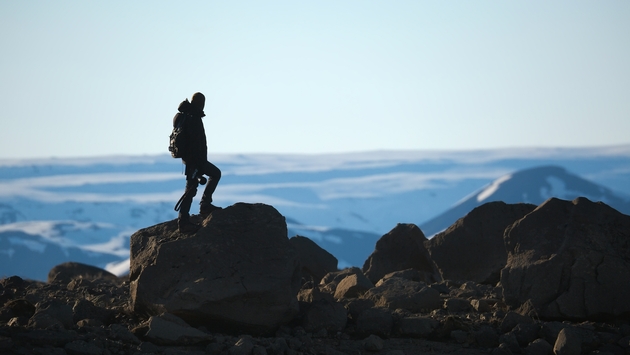
Curiosity and travel go hand in hand. It’s hardly a new revelation. Globetrotting has always been the pursuit of the adventurous, the intrepid and the curious.
But a new study on the topic from Curio Collection by Hilton reveals even more about curiosity as it relates to the modern traveler. Although only 20 percent of people are said to have the “wanderlust gene” (DRD4-7R), according to a survey commissioned by the Curio Collection, 91 percent of the population considers themselves to be curious.
In addition, 73 percent of people say that traveling is their go-to outlet to experess their curiosity.
The study also revealed that curiosity is a way of life and plays a key role in travelers’ vacation planning process.
As part of the study, respondents shared how curiosity motivates the way they explore a new destination:
- There’s always room for growth: Sixty percent of people believe they are more curious than the average person, yet more than half (53 percent) want to be more open to new experiences.
- Education motivation: More than 90 percent of people take trips to learn something new, and 79 percent consider learning something new while on vacation a priority.
- No time for naps: Fifty-five percent of travelers say that vacations are primarily a way to explore, not to relax.
- Unique exploration: Fifty-seven percent of travelers wish they could spend more time exploring the things they are most curious about, such as visiting ancient ruins, eating dinner at a well-regarded restaurant or experiencing a safari.
- Perfect travel partner: Sixty-four percent describe the perfect travel companion as someone who is curious. 65 percent consider a spouse or significant other as the best travel partner for new experiences, while 25 percent would prefer to travel alone.
On the heels of the study, Curio Collection by Hilton has unveiled new offerings for its Curious Gene program.
For instance, to help consumers customize their trips, the brand worked with researchers to develop five curiosity types – Pathfinder, Epicurean, Culturalist, Spiritualist and Challenger – and recommend Curio Collection hotels and destinations for each traveler preference.
In addition, through August 8, U.S. travelers who take the ‘Are You Curious?’ social media quiz to find out their curiosity type have the chance to win a seven-night stay at any Curio Collection property that sparks their wanderlust.
Fifteen additional winners will receive a two-night stay at any Curio Collection hotel worldwide.
And finally, to help travelers delve into their curiosity, the brand is partnering with celebrated travel expert and journalist, Ashlan Cousteau, who has shared her love of exploration in programs on E!, Discovery Channel, Travel Channel and more.
Cousteau, a curious pathfinder, will be providing travel tips to ensure even the most curious of travelers are gratified. In addition, Cousteau will also provide the sweepstake winner recommendations based on their interests and selected destination.
“My passion for discovery has led me to virtually every corner of the globe, with each trip allowing me to gain a deeper understanding of others, the world around me and most significantly, myself,” Cousteau said in a statement. “I look forward to working with Curio Collection by Hilton to help enable fellow travelers to follow their curiosity – wherever that may lead them – and to create meaningful experiences in ways they may never expect.”
To learn more about the Curious Gene program and to join the conversation across social media, use the hashtag #BeCurious and visit CitiesbyCurio.com/BeCurious.
The Louvre Museum closed as workers strike, citing overcrowding
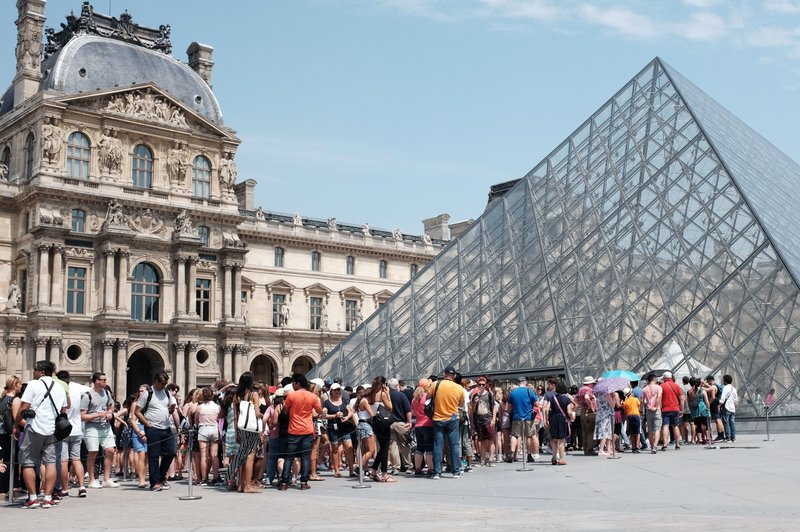
The Louvre was shuttered on Monday, leaving hordes of tourists outside amid its famous glass pyramids. The reason? The Paris museum’s security and reception staff were on strike, protesting “unprecedented deterioration of conditions” amid record crowds.
The museum, located in a former royal palace on the city’s Right Bank, attracted a record 10.2 million visitors last year – a 25% increase over the year before. “No other museum in the world has ever equaled this figure,” the museum trumpeted in January.
But workers say both visitors and staff are suffering from such massive popularity.
“The Louvre is suffocating,” the Sud Culture Solidaires Union said in a statement Sunday. “While the public has increased by more than 20% since 2009, the palace has not grown. … Today the situation is untenable.”
Amid rising crowds from 2009 to 2018, staff headcount declined in that period from 2,161 to 2,005, according to the union.
More at NPR.com
TV: Love finds Ali Wong and Randall Park in ‘Always Be My Maybe’

Randall Park and Ali Wong star in a Netflix romantic comedy about two young friends who grow up and grow apart, only to find each other again as adults. Also, there’s Keanu Reeves.
“Always Be My Maybe” is an enormously refreshing rom-com in a couple of ways that people who have covered its release have talked about a lot. Specifically, it’s an American rom-com (released on Netflix) that features two Asian American characters from two Asian American families who have sex, fall in love, break up, date other people and then find each other again. It stars Randall Park, who has spent the last several years on ABC’s Fresh Off the Boat but has had a long and varied career in comedy, and Ali Wong, whose career boomed after the release of her comedy specials Baby Cobra and then Hard Knock Wife. Park and Wong have known each other a long time, and they have eager fan excitement to thank (at least in part) for the fact that they decided to actually go ahead with the project.
As romantic comedies have contracted after their post-’90s boom, those featuring leads of color have been, regrettably but predictably, hit especially hard. And while Crazy Rich Asians in 2018 brought welcome representation for Asian American actors in both romance and comedy, it was not really quite a romantic comedy in the traditional sense. More at NPR.com






